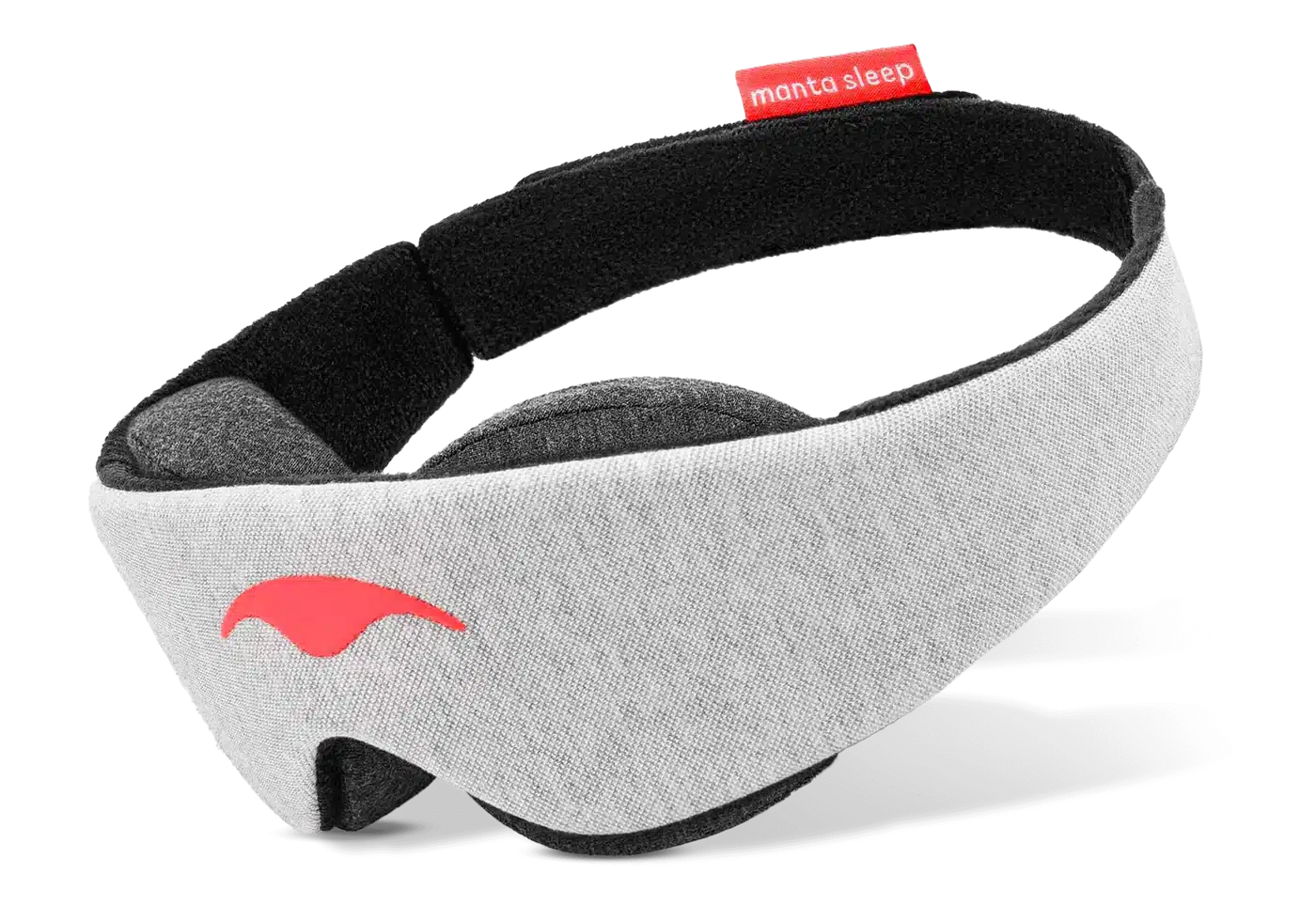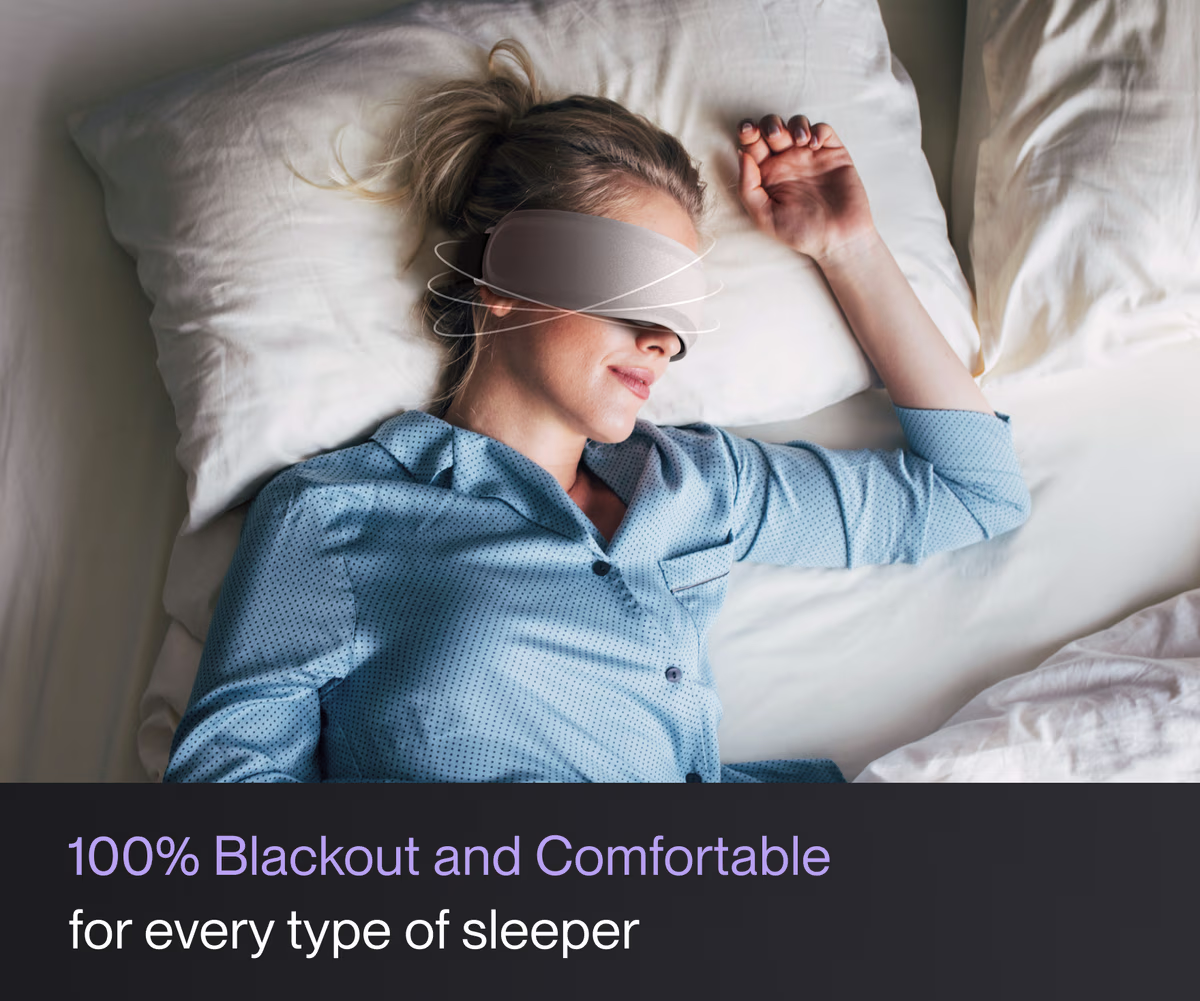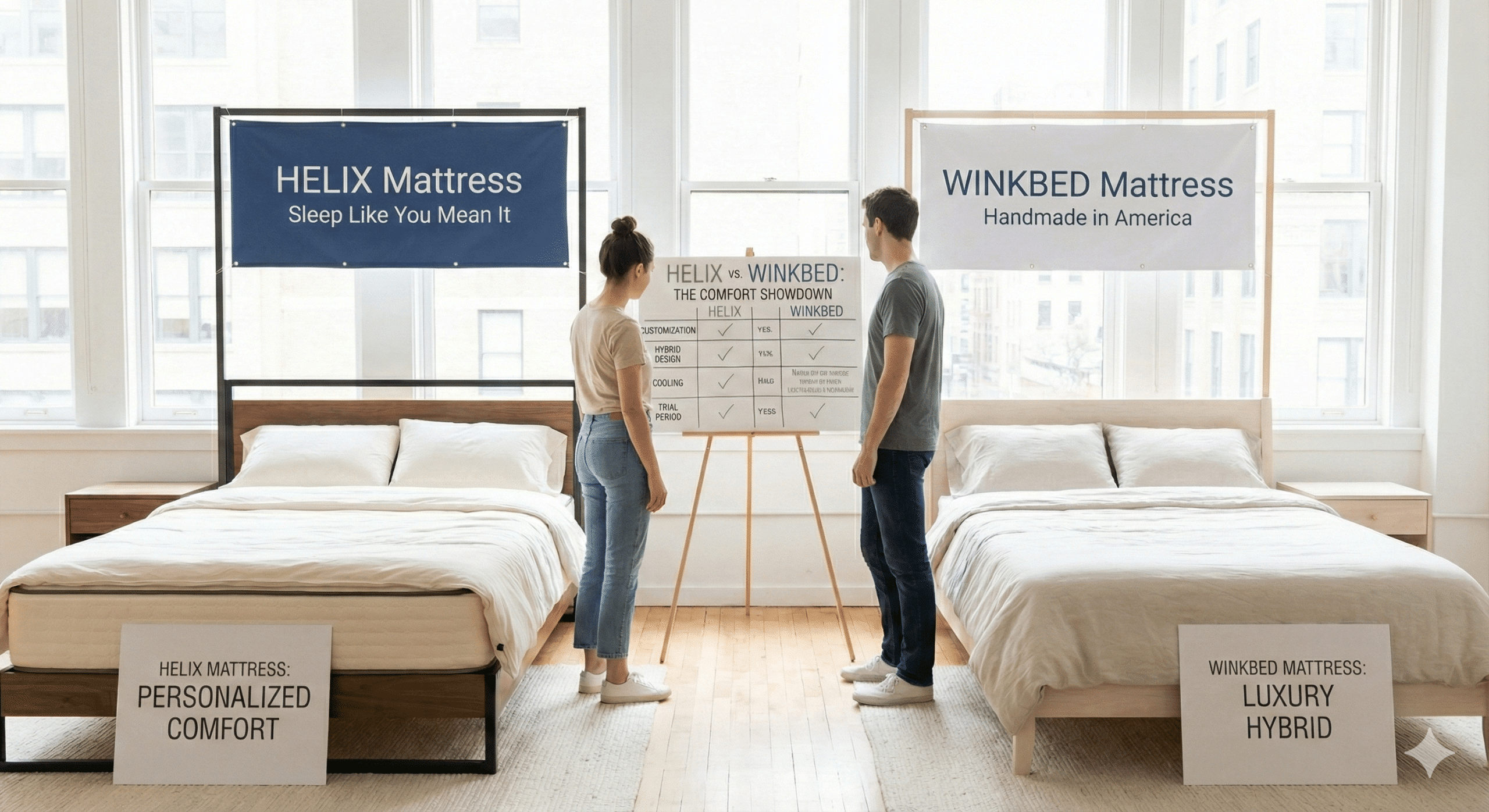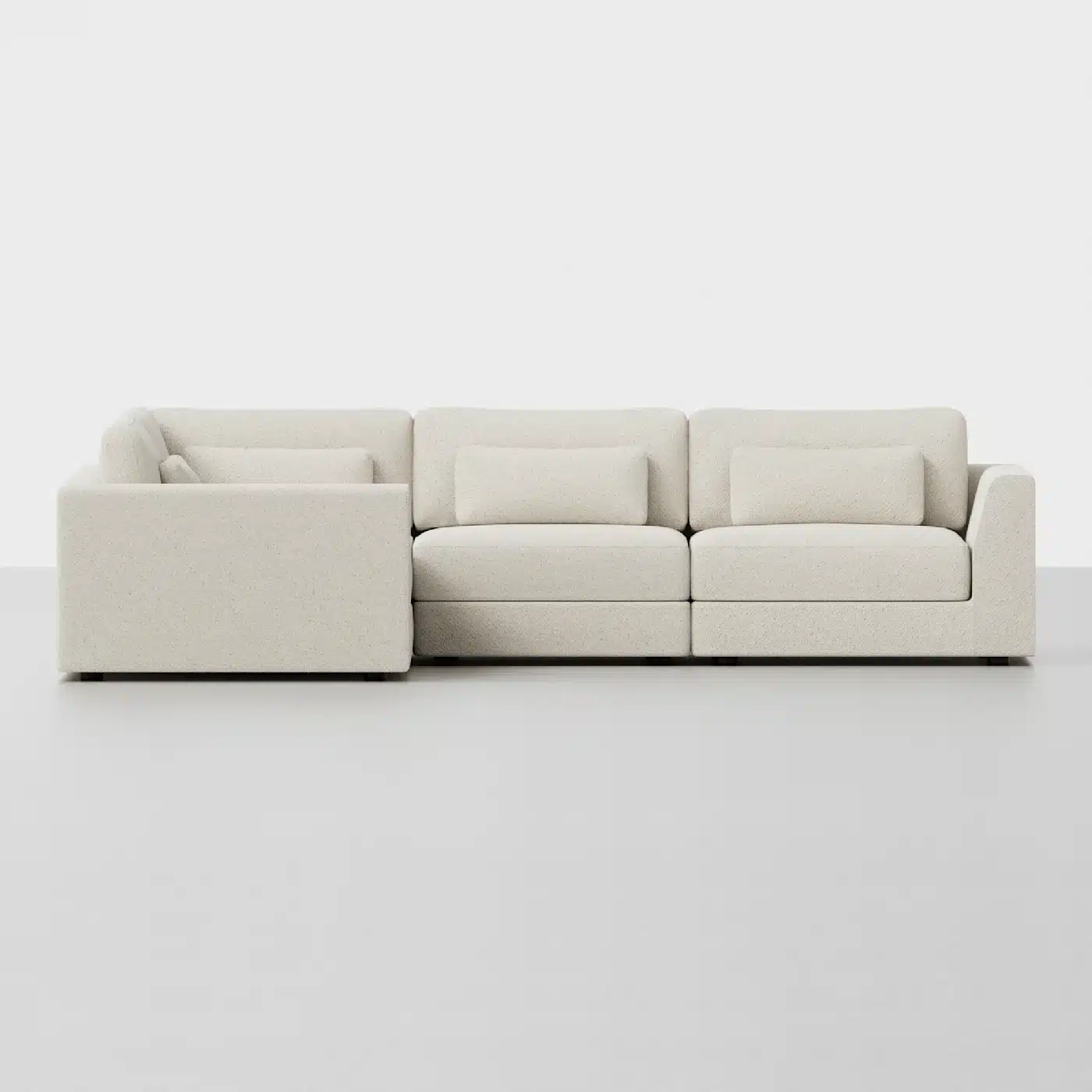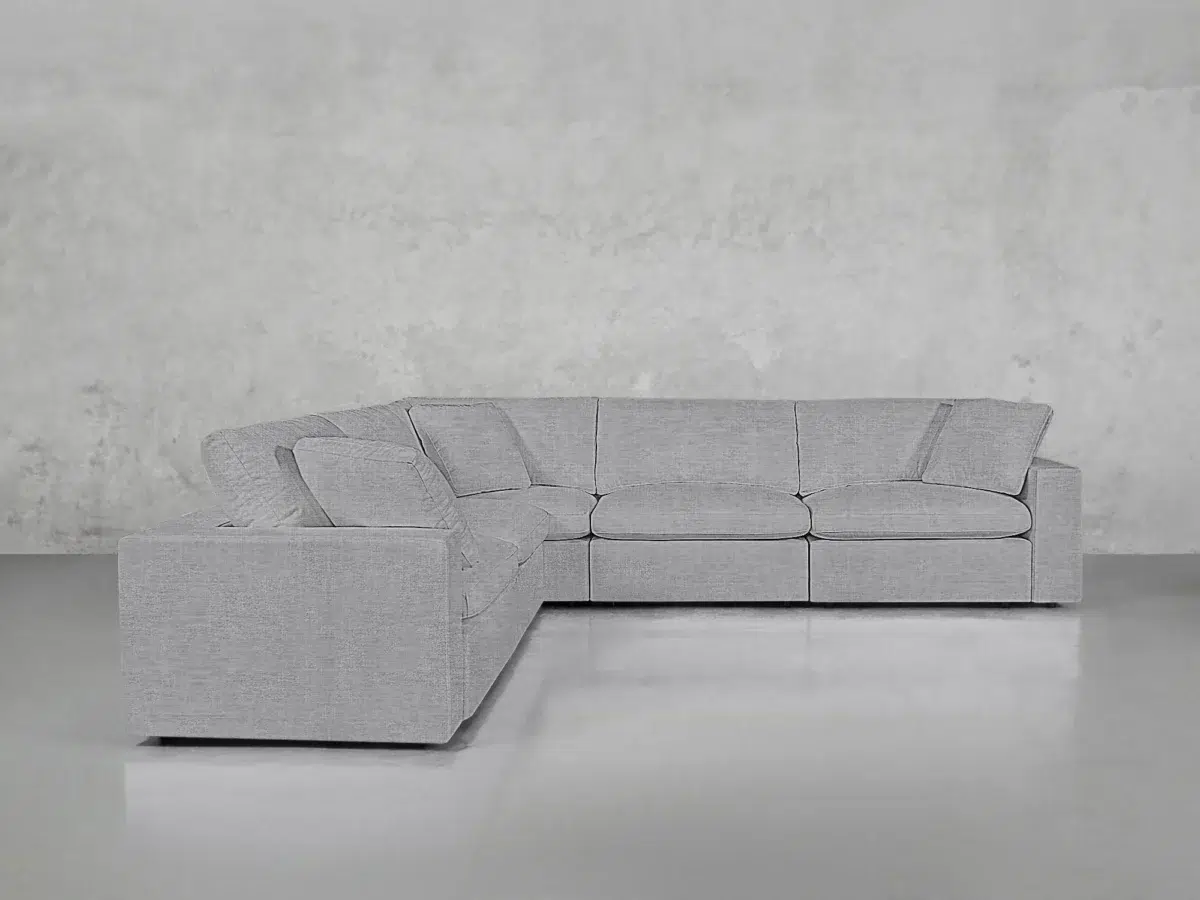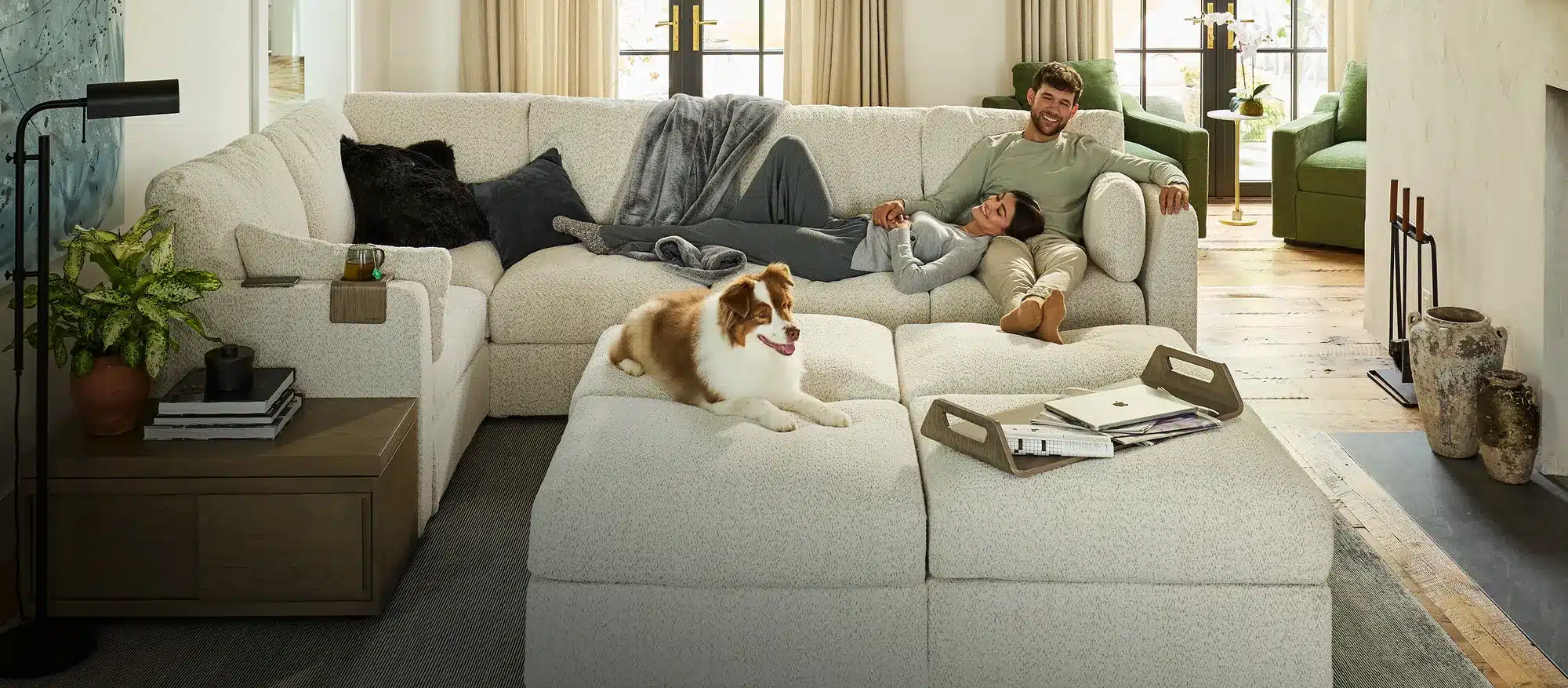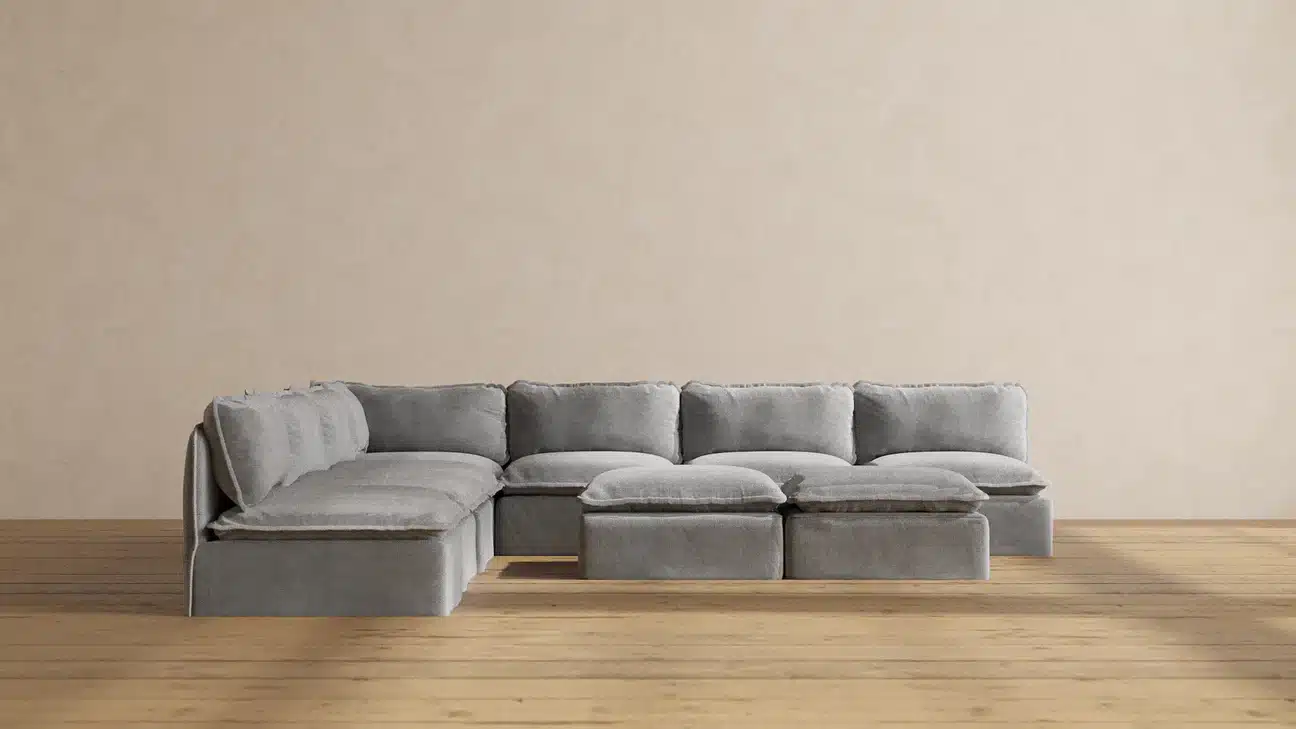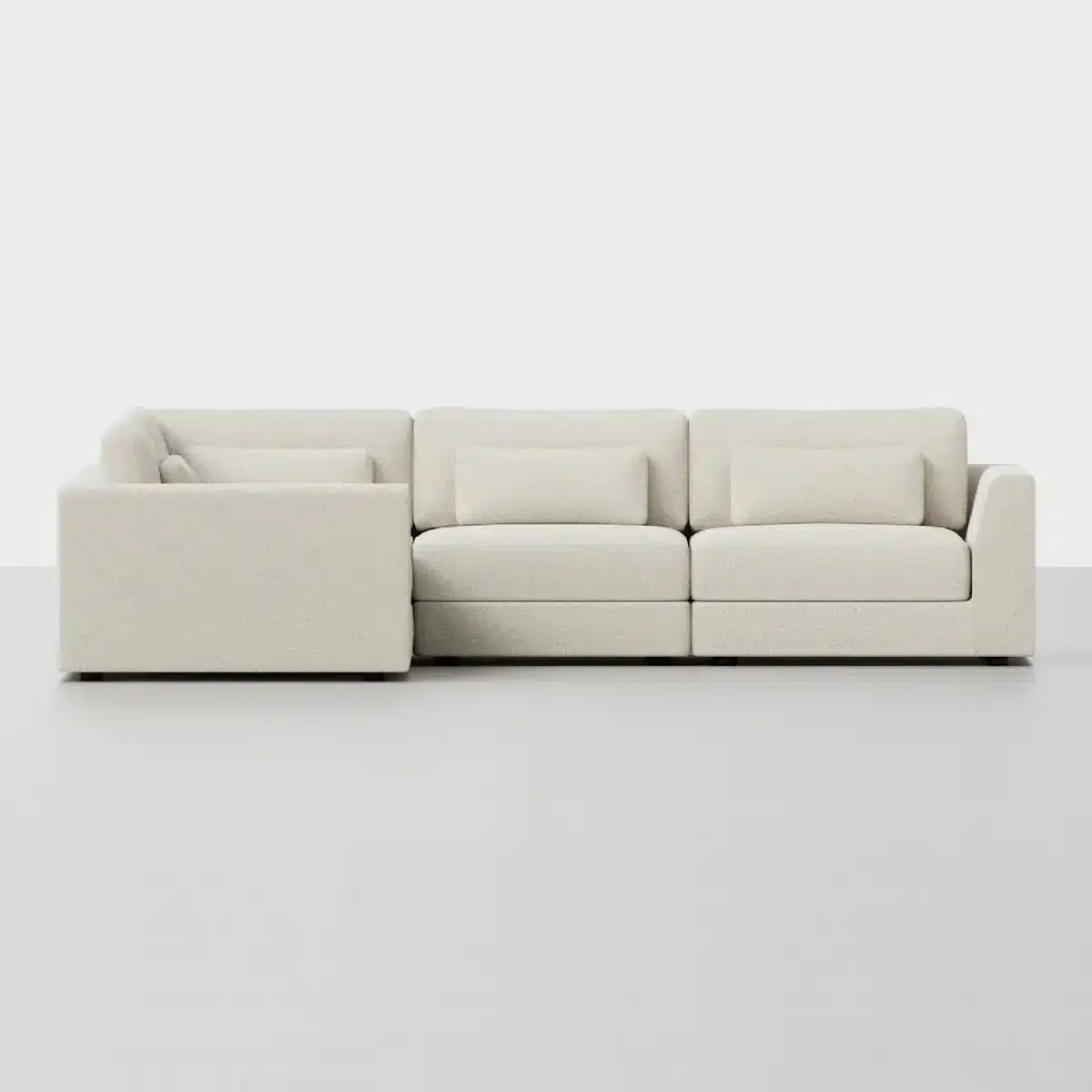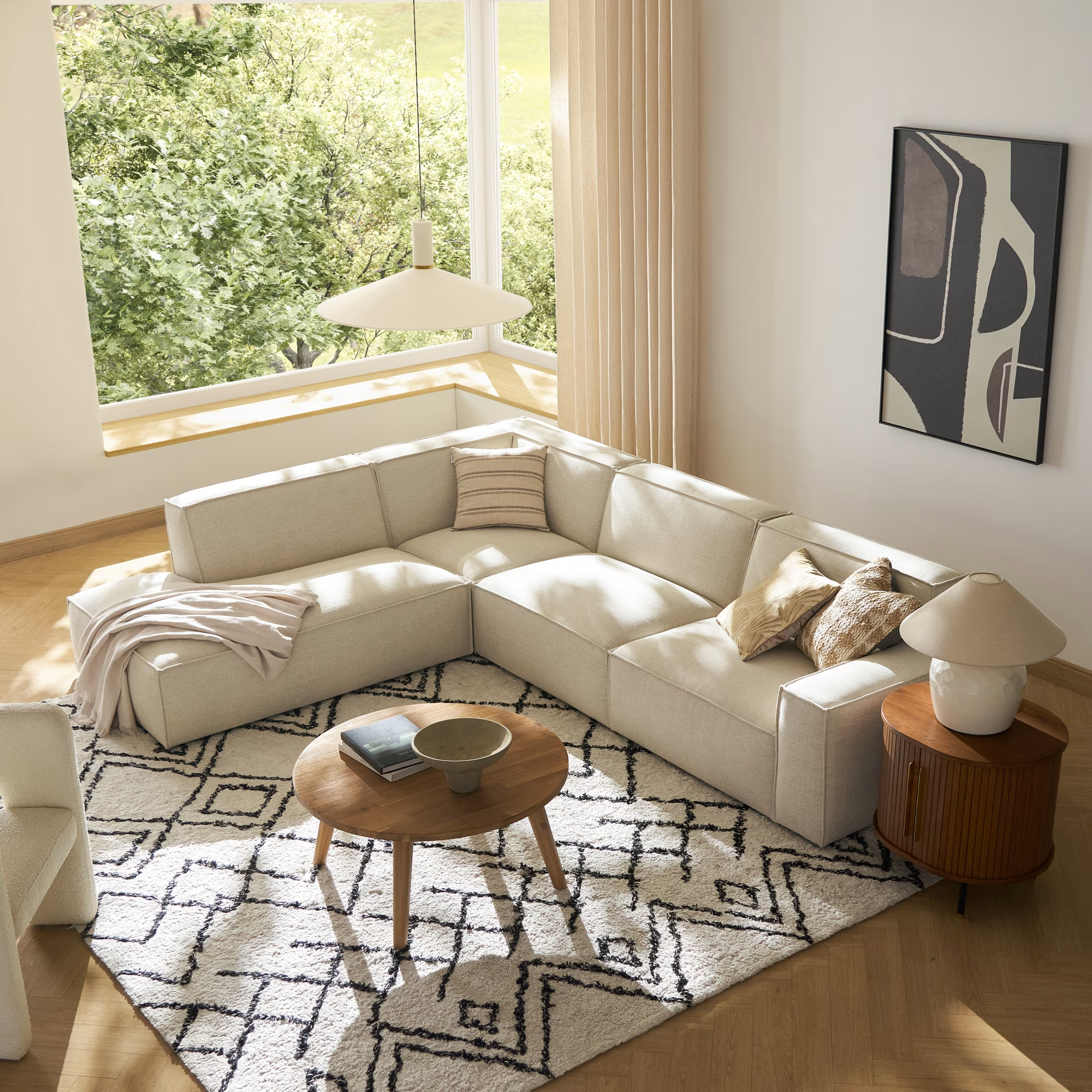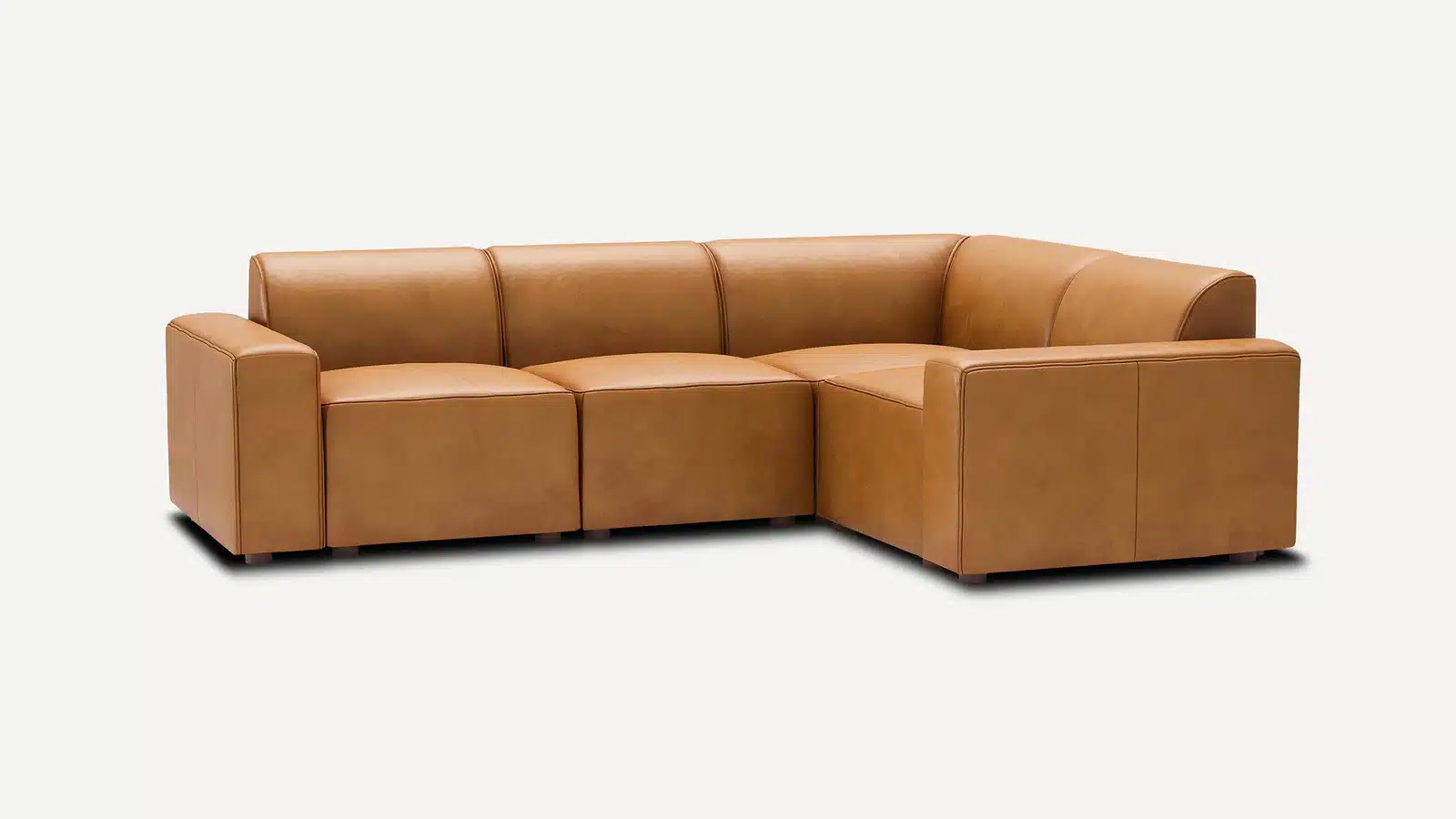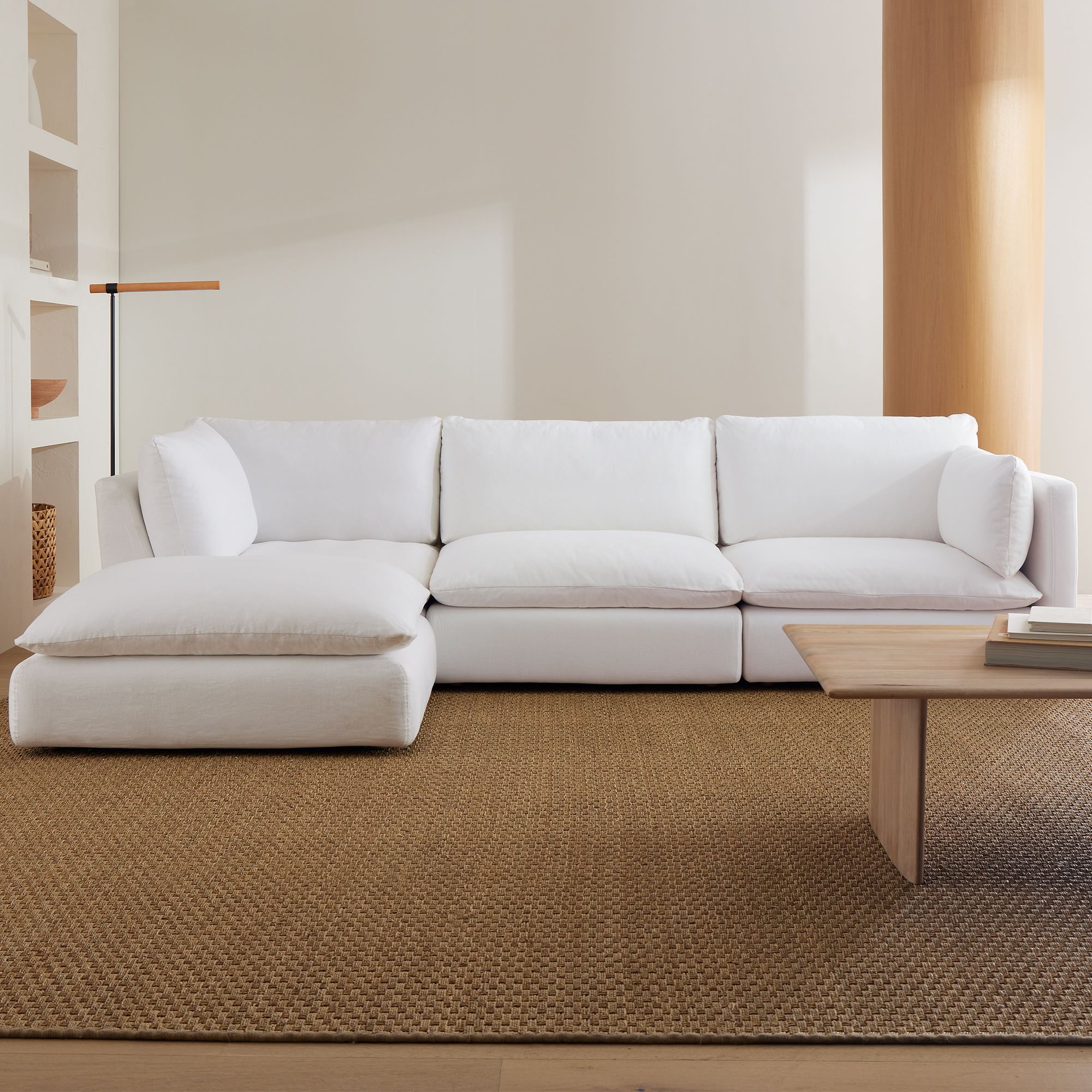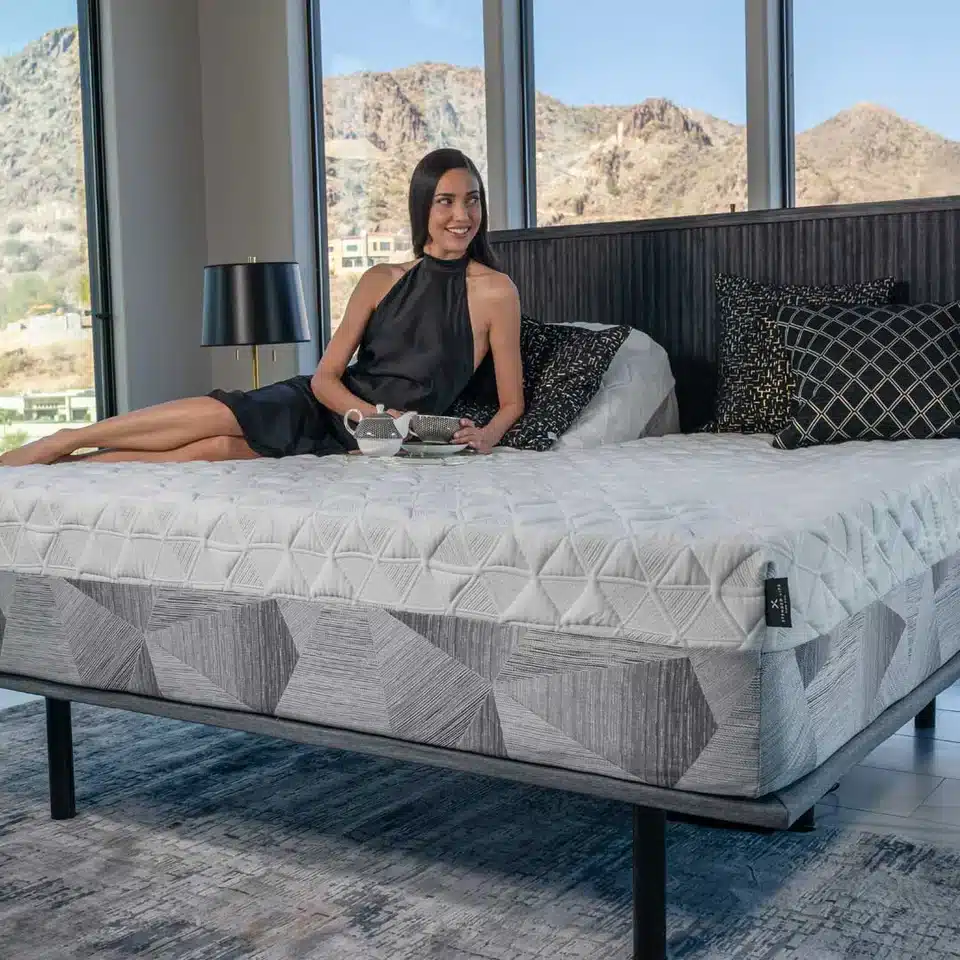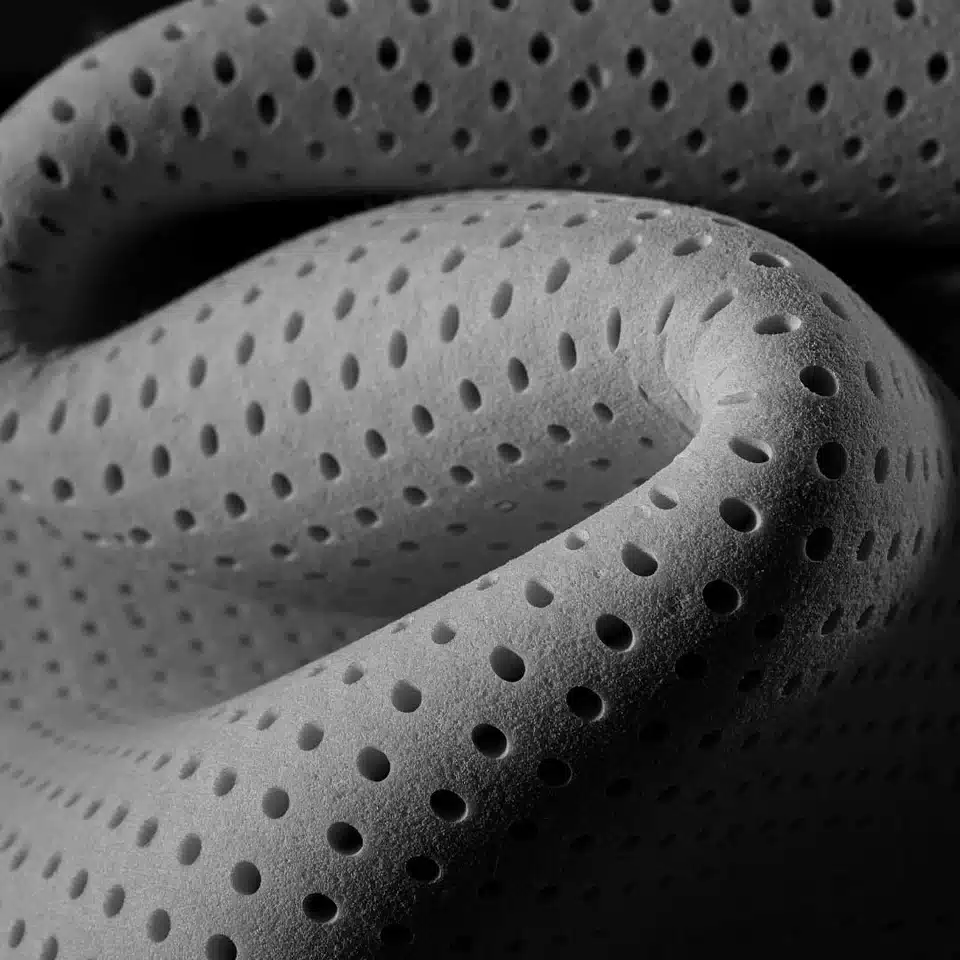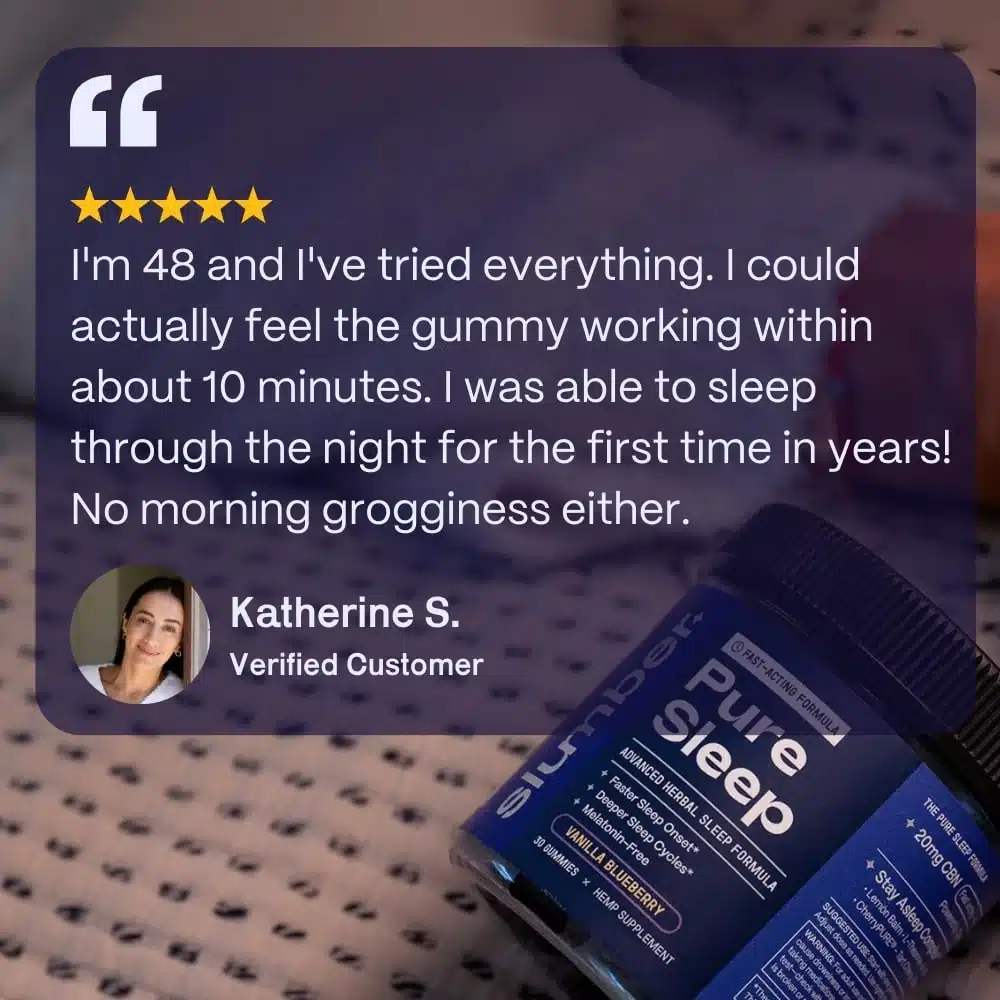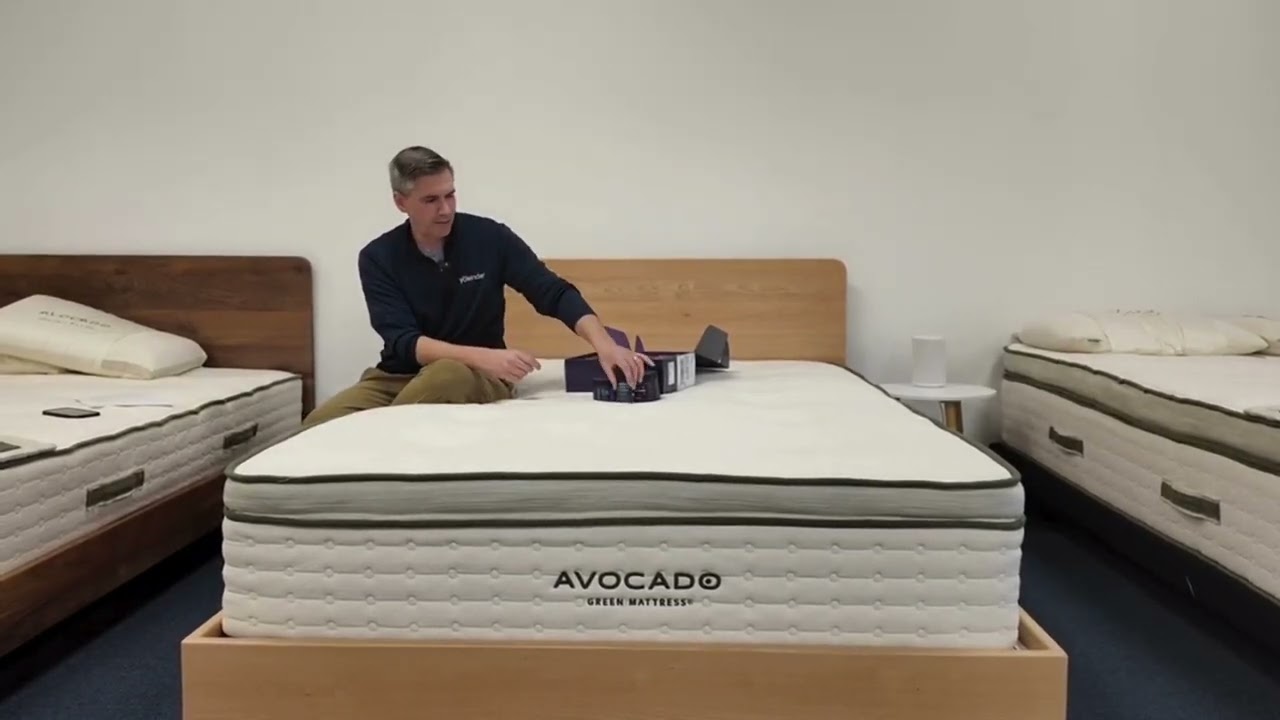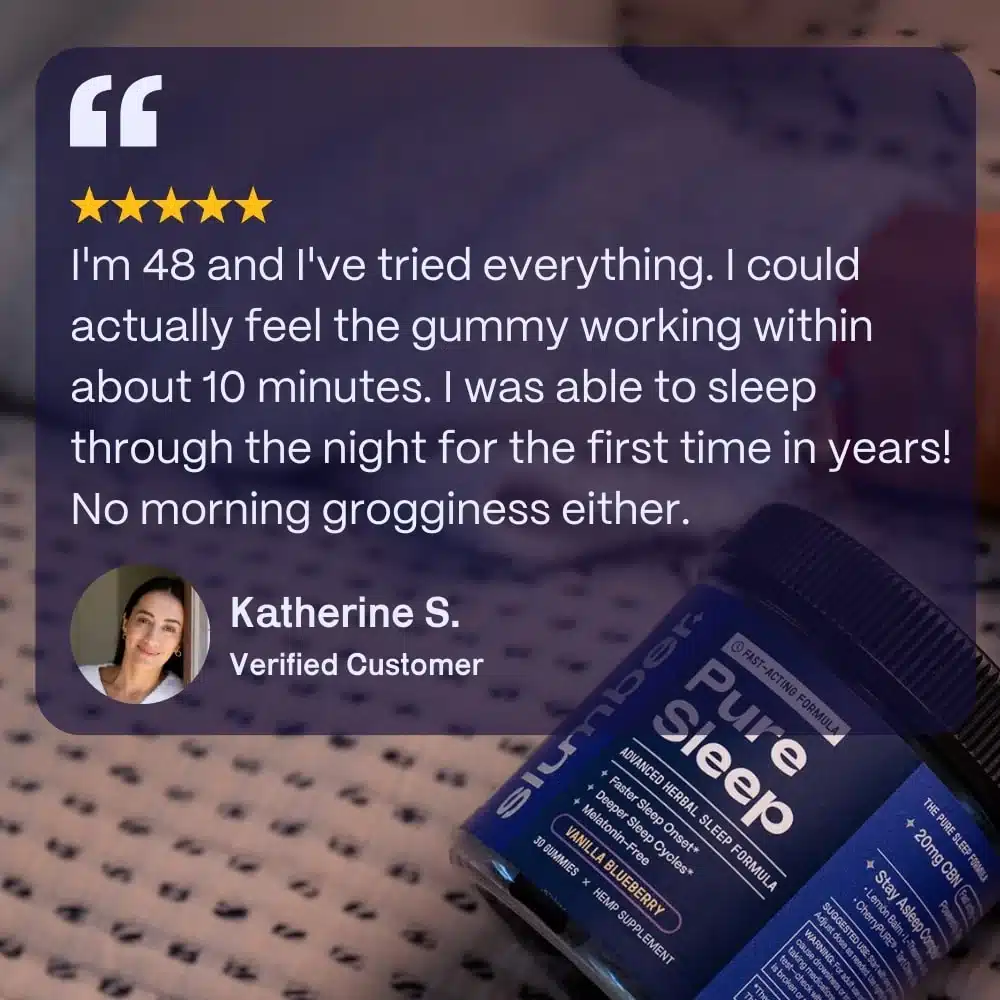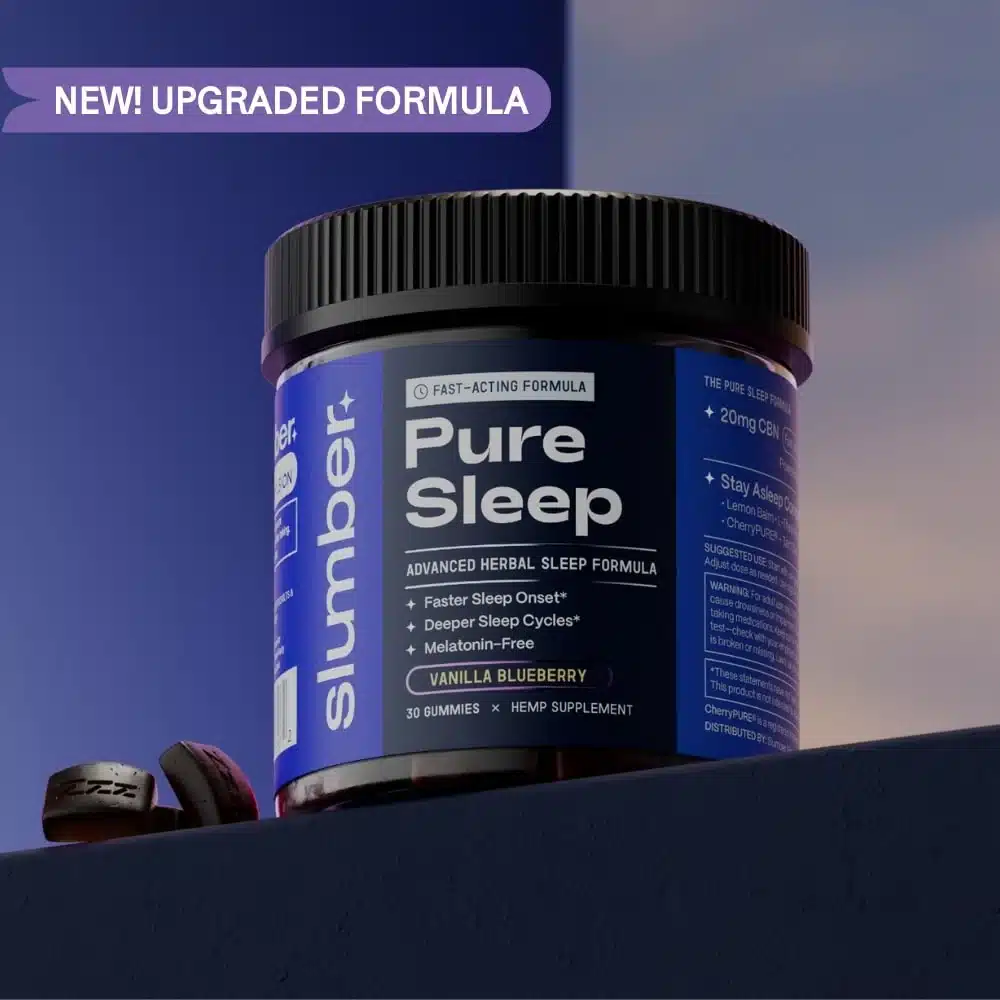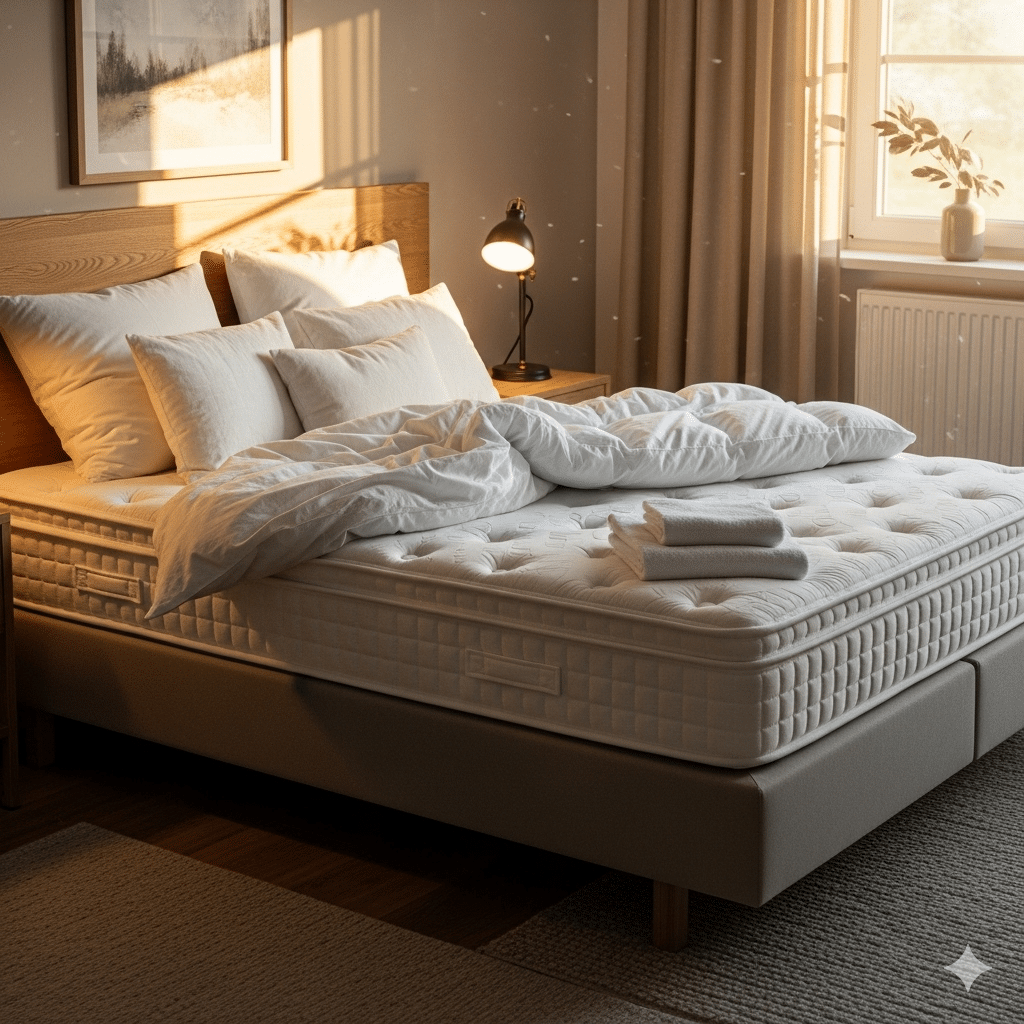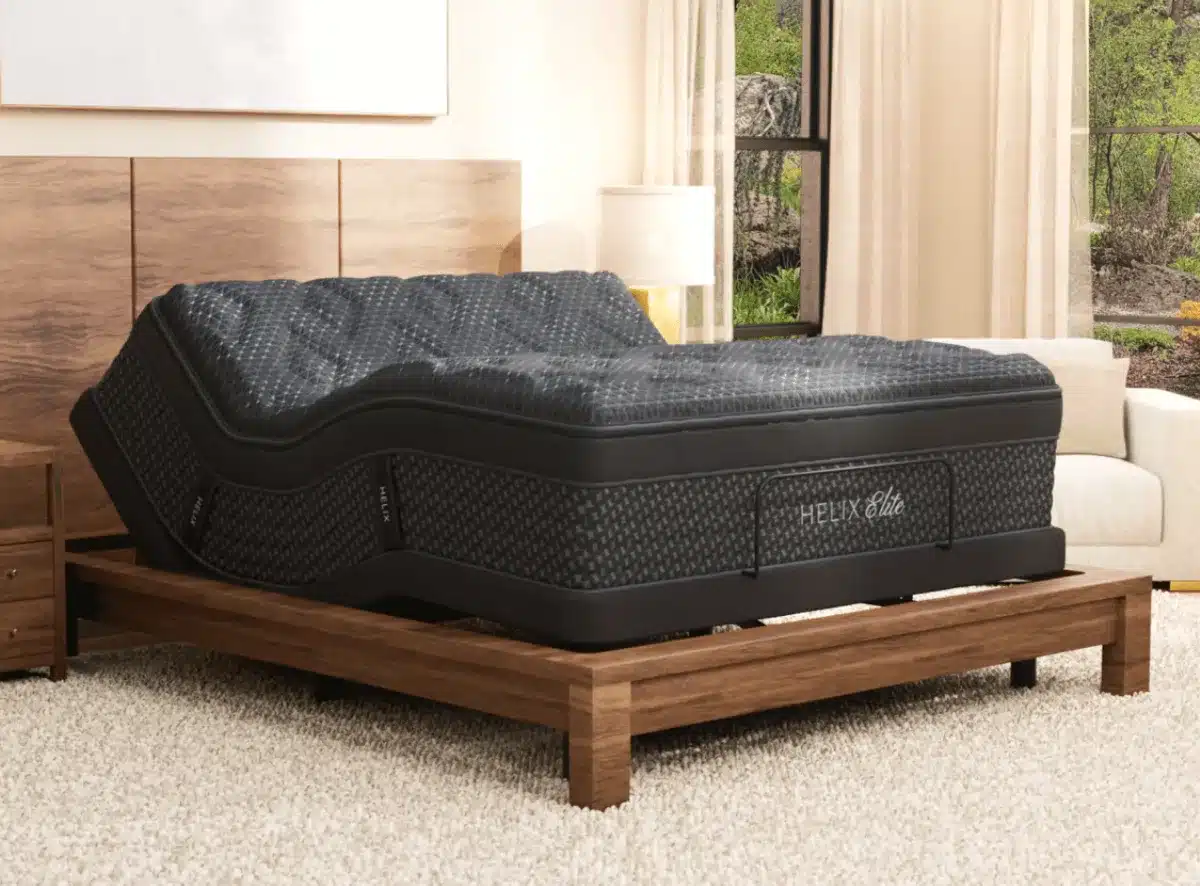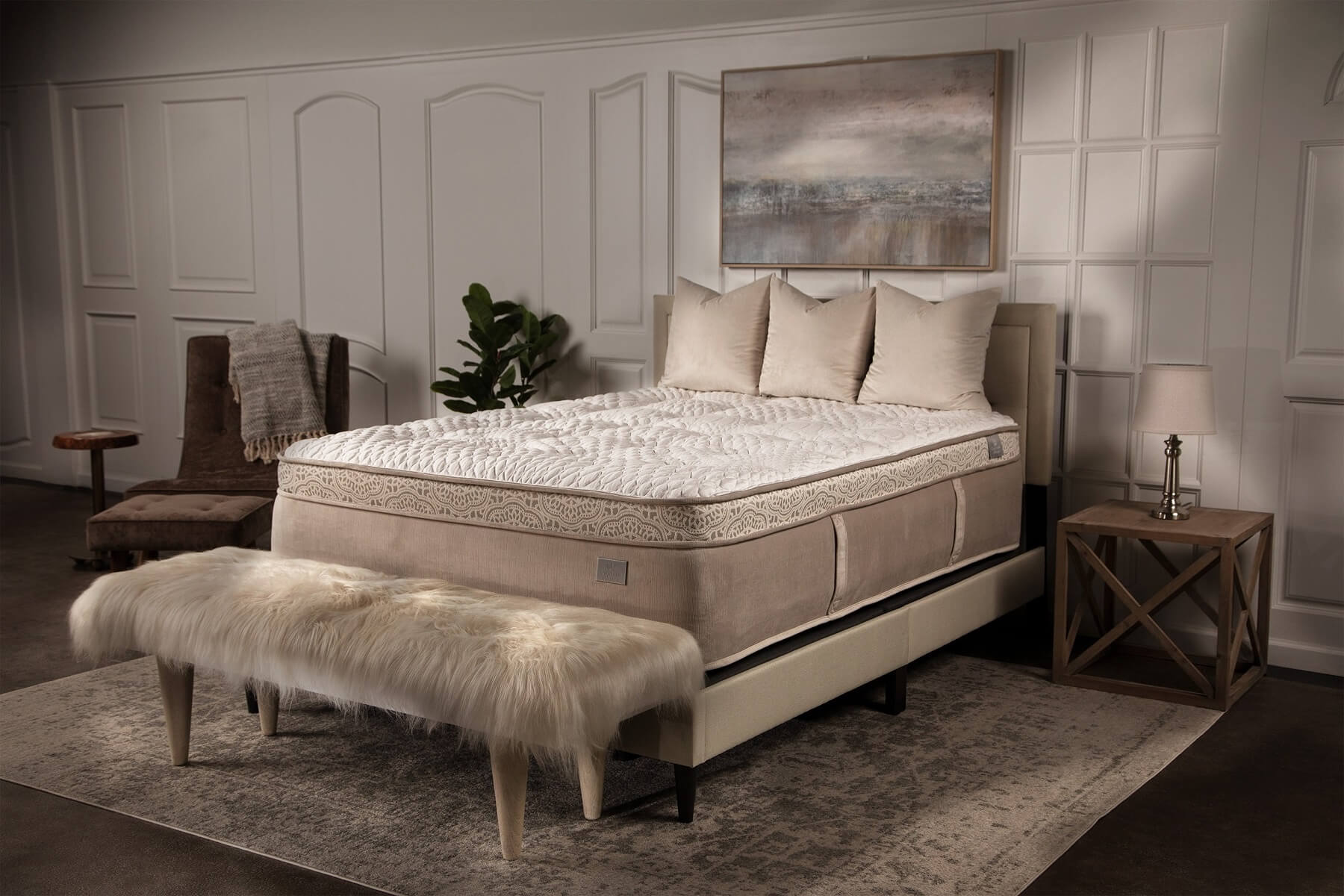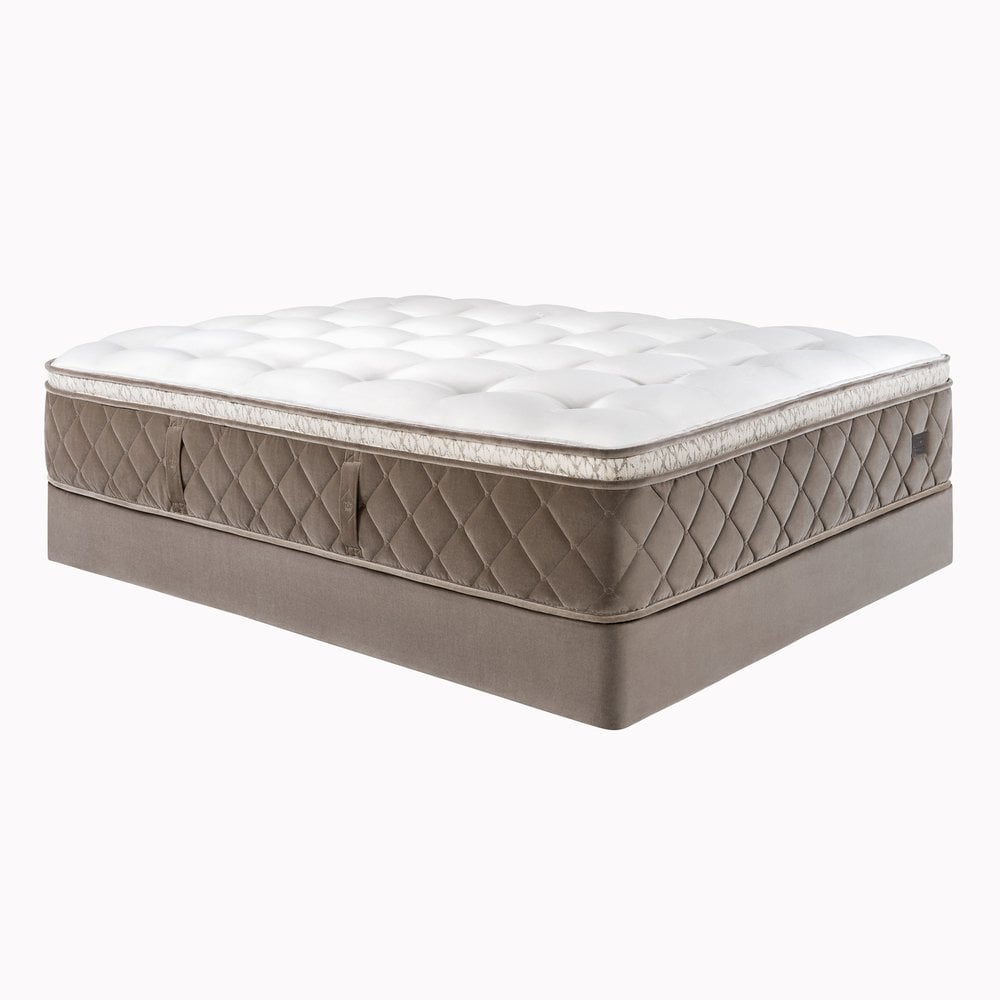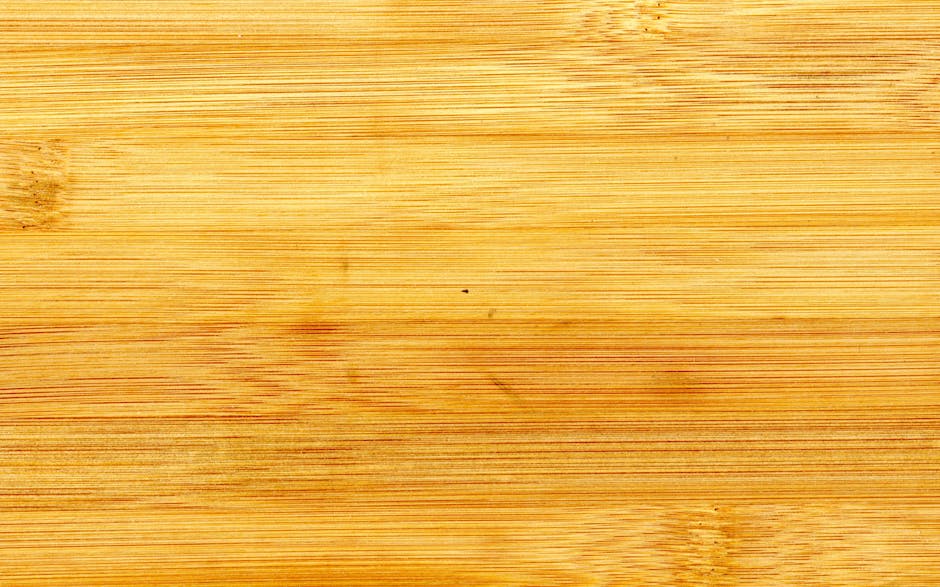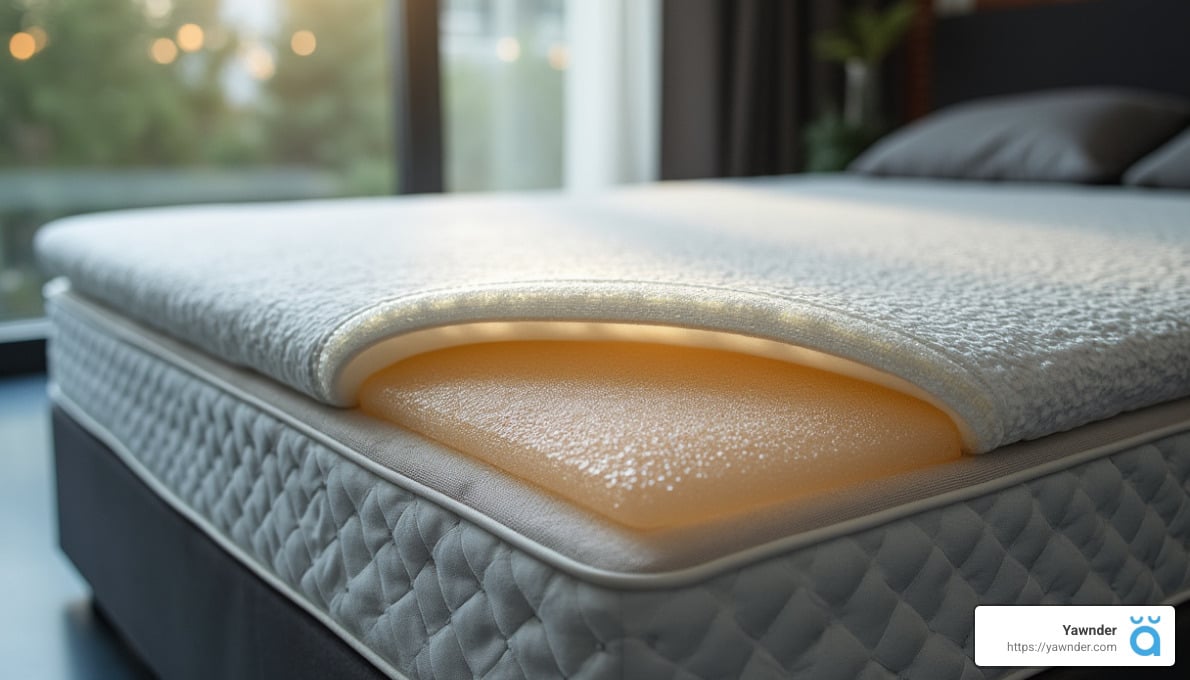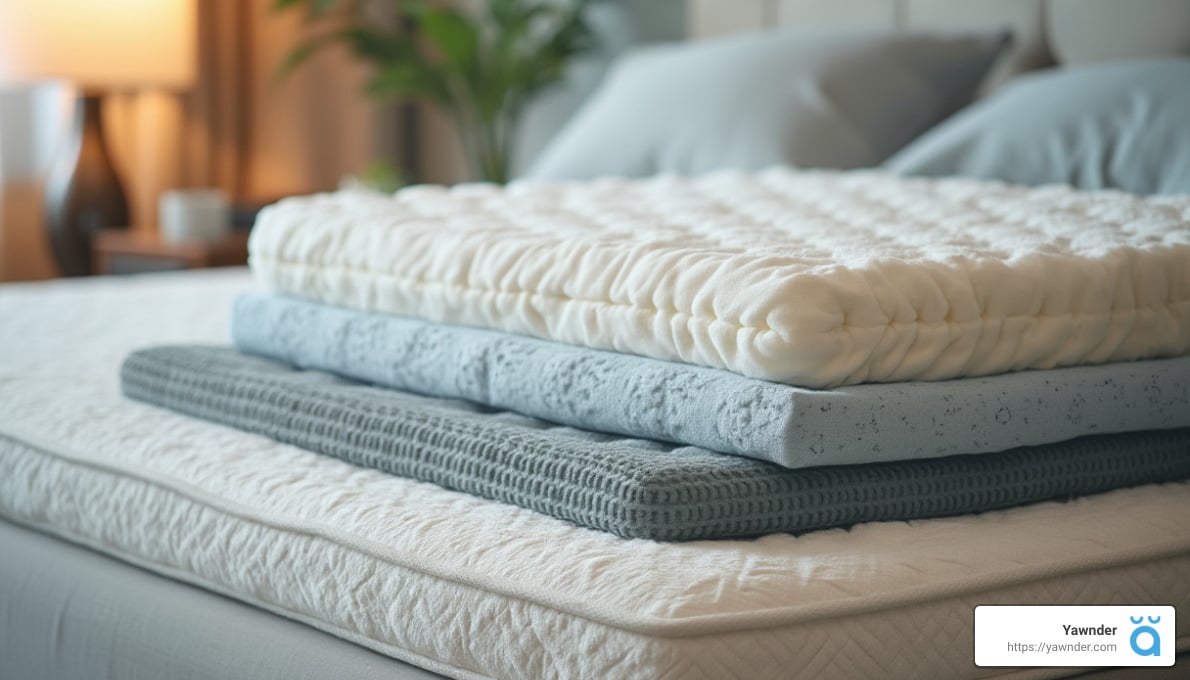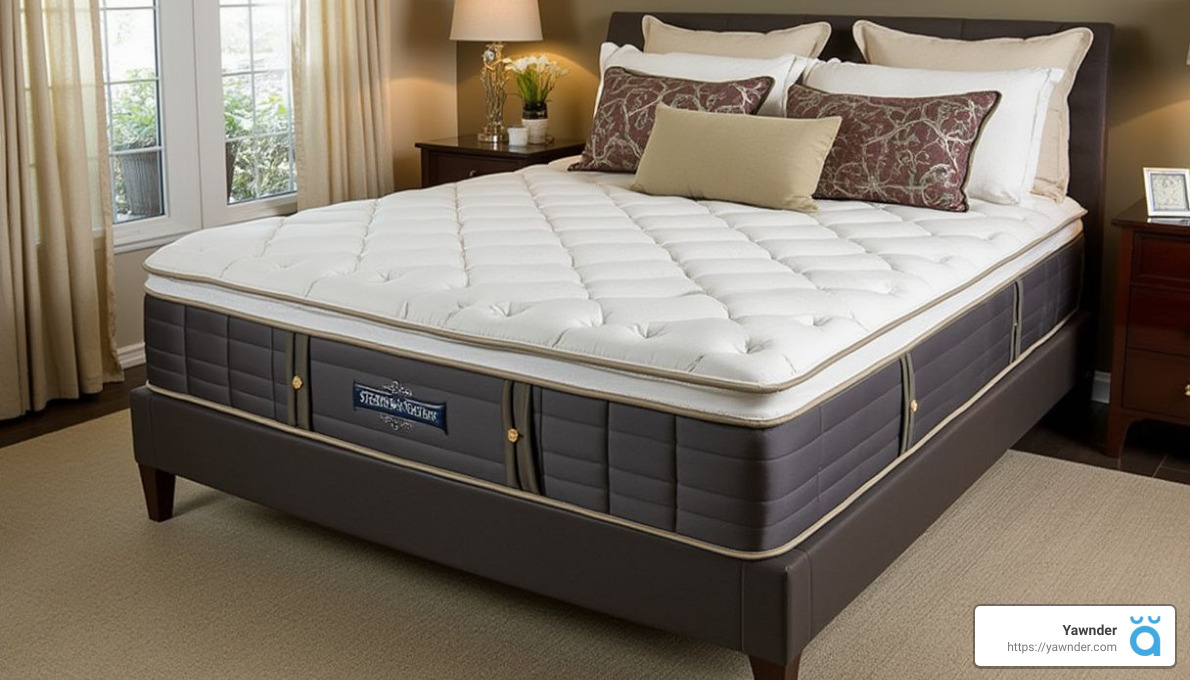Helix Twilight Elite vs Helix Dawn Elite: A Comprehensive Comparison
Helix Sleep’s Elite collection represents the brand’s top-tier luxury hybrid mattresses. Within this line, the Helix Twilight Elite and Helix Dawn Elite are both firm models, but they are tailored to different sleeper preferences. Below, we provide a detailed comparison of the Twilight Elite and Dawn Elite across all major aspects, including firmness, support, pressure relief, cooling features, motion isolation, edge support, durability, ideal sleep positions, sleeper types, and pricing. We’ll highlight the core differences between these two mattresses and offer practical recommendations for various types of sleepers.
Firmness Level and Feel
Helix Twilight Elite – Firm (7.5/10): The Twilight Elite has a firm feel with a slight plush touch on the surface. It is rated around 7 to 7.5 out of 10 on the firmness scale (with 10 being the firmest). This means it’s very much in the firm category, but it’s marginally softer than the absolute firmest options. The Twilight Elite’s pillow-top and comfort layers provide a bit of conforming cushion on top of its sturdy core. As a result, the feel is “firm yet contouring” – you’ll notice the mattress is supportive and doesn’t sink excessively, but there is a gentle pressure-relieving cradle especially under the shoulders and hips. Many sleepers describe the Twilight Elite as having a balanced firm feel: the surface has minimal give (you won’t sink deeply), yet it isn’t board-hard thanks to the plush quilted top and memory foam layer. Overall, the Twilight Elite feels supportive and stable, with just enough softness at the very top to prevent it from feeling too rigid.
Helix Dawn Elite – Firm (8/10): The Dawn Elite provides an extra-firm, highly supportive feel, roughly 8 out of 10 on the firmness scale. It is one of the firmest mattresses Helix offers. Lying on the Dawn Elite, you’ll experience a very flat, “on-top-of-the-bed” sensation. The surface has minimal cushioning give, so your body remains lifted rather than enveloped. Even compared to the Twilight Elite, the Dawn Elite feels stiffer and more resilient. The comfort layers in the Dawn Elite are made entirely of high-density polyfoam (no memory foam), which means the mattress responds quickly to pressure and has a more uniform, responsive feel. There is a bit of initial quilting softness from the Euro-top, but it’s thinner in contour than the Twilight’s; within moments of lying down, you’ll primarily feel the strong support of the underlying coils and foams. Overall, the Dawn Elite’s feel is very firm, flat, and highly supportive – ideal for those who want very little sinkage and a mattress that pushes back against the body.
Comparing Feel: The key difference in feel is that Twilight Elite offers a touch more plushness and contouring at the surface, whereas Dawn Elite feels harder and more “unyielding.” For example, when pressing your hand into the Twilight Elite, you’ll detect a bit of conforming around your hand due to the memory foam layer; on the Dawn Elite, the surface doesn’t contour as much and springs back faster due to its all-polyfoam construction. Side-by-side, most people would say Twilight Elite feels firm but slightly cushioned, and Dawn Elite feels firm to extra-firm and very solid. If you prefer even a hint of softness or pressure relief in a firm bed, the Twilight Elite will feel more comfortable. If you want a truly firm mattress with a “no sink” feel, the Dawn Elite delivers exactly that. Both mattresses are significantly firmer than medium-firm beds – they are geared towards sleepers who know they want a firm sleeping surface.
Support and Spinal Alignment
Support Systems: Both the Twilight Elite and Dawn Elite are hybrid mattresses constructed with robust support systems. They each stand 16 inches tall and share a similar base design: an 8-inch pocketed coil core with zoned support and reinforced perimeter coils. This means both models have extra-strong coils under heavier parts of your body (like the lumbar area) and sturdier coils around the edges for edge support. Beneath the coils is a high-density polyfoam base layer that adds stability. This advanced coil system gives excellent push-back support in both mattresses, helping to keep your spine aligned in neutral position.
Spinal Alignment: Thanks to their firm designs and zoned coil cores, both mattresses excel at maintaining spinal alignment, especially for back and stomach sleepers. When you lie on either the Twilight Elite or Dawn Elite, the mid-section (hips and abdomen) is well-supported to prevent sagging, and the mattress’s firmness keeps your spine from bowing. The differences come into play with different sleep positions:
Back Sleeping: Both models provide outstanding lumbar support for back sleepers. The Dawn Elite’s extra firmness offers a very stable feel under the lower back. Heavier back sleepers (above ~230 lbs) in particular will notice that the Dawn Elite prevents their hips from sinking too far, which helps avoid lower back arching. The Twilight Elite, being slightly less firm, still keeps average-weight back sleepers well-aligned but with a bit more give at the shoulders and hips. Many back sleepers in the average weight range (130–230 lbs) actually appreciate the Twilight Elite’s tiny bit of contour, as it can fill in the gap in the lower back while still keeping them supported. In short, back sleepers will get great support on both, with the Dawn Elite feeling a touch more rigid (beneficial for very heavy individuals or those who just prefer a firmer push-back) and the Twilight Elite feeling a tad more adaptive while still maintaining alignment.
Stomach Sleeping: Proper support for stomach sleepers is crucial to prevent the pelvis from dipping and causing overarching of the spine. Here, both mattresses perform well due to their firmness, but the Dawn Elite’s additional firmness is an advantage for certain sleepers. Stomach sleepers of moderate to high body weight will likely find the Dawn Elite keeps their midsection propped up more effectively. In fact, for strict stomach sleepers over ~230 lbs, the Dawn Elite is often the recommended choice – its very firm feel ensures the stomach and hips don’t sink in, maintaining a flat surface for the torso. The Twilight Elite, while still firm, allows slightly more sink in the pelvic area due to that extra cushioning; for most stomach sleepers (particularly under 230 lbs), this is still fine and keeps alignment in check. Lighter stomach sleepers (under 130 lbs) might actually prefer the Twilight Elite because the Dawn could feel uncomfortably hard for their frame. Overall, stomach sleepers up to an average weight will get adequate support from either bed, but those on the heavier side or who simply want the firmest possible surface for stomach-sleep posture should lean toward the Dawn Elite.
Side Sleeping: This is where support needs differ, and the two models diverge in suitability. Side sleepers need a mattress that supports the spine while also compressing enough at the shoulders and hips to allow a straight spinal line. Both Twilight and Dawn are on the firm end, so neither will compress as much as a soft mattress. However, the Twilight Elite’s slightly softer, more adaptive top layers mean it will conform better to side sleepers’ curves than the Dawn Elite. The Twilight Elite’s support is still very firm underneath, but that bit of contour can reduce the gap between your waist and the mattress and let your shoulder sink in a touch more, helping keep your spine straight when on your side. Heavier side sleepers (over ~200 lbs) in particular can get good spinal alignment on the Twilight Elite – their weight is enough to engage the comfort layers, and the mattress is strong enough to keep their mid-section from sagging. In contrast, the Dawn Elite can be too firm to allow proper side sleeping posture, especially for those under 230 lbs. Because it doesn’t soften much under the shoulder, a side sleeper on the Dawn might find their spine tilting upward (neck and lower back misaligned) due to the shoulder being pushed up. Only in some cases, a very heavy side sleeper (significantly 230+ lbs) who simply prefers an ultra-firm feel might manage on the Dawn Elite, but generally side sleepers will not sink enough into the Dawn to achieve neutral alignment or comfort. In summary, Twilight Elite can accommodate side sleepers who require firm support but still need a bit of give for alignment, whereas Dawn Elite is best reserved for back/stomach sleepers in terms of maintaining ideal spinal posture.
In terms of overall support quality, both mattresses are high performers. The dual microcoil layers (discussed more in the next section) and zoned coil core work together to distribute body weight evenly. There is minimal risk of sagging or bowing in either mattress even over long-term use, thanks to the heavy-duty coils and high-density foams. If support and healthy spinal alignment are your top priorities, both Twilight Elite and Dawn Elite deliver a robust, orthopedically sound feel – just tailored to slightly different sleeping styles.
Pressure Relief and Comfort Layers
Despite being firm mattresses, both Helix Twilight Elite and Dawn Elite incorporate thick comfort layers to alleviate pressure points – but the composition of these layers differs, affecting how pressure relief is experienced.
Construction of Comfort Layers: Each mattress has a Euro-style pillow top with a plush quilted cover (Helix’s GlacioTex cooling cover quilted with foam) and a multi-layer foam comfort system totaling about 6 inches thick. Both models even include not one but two layers of microcoils within their comfort stack. These microcoils are small, flexible coils above the main coil unit; they add some conforming and airflow. However, the key difference is in the foam types used:
The Helix Twilight Elite’s comfort layers are a mix of polyfoam and memory foam. Notably, one of the middle layers in the Twilight Elite is copper-infused memory foam. Memory foam is known for its pressure-relieving capabilities – it compresses under pressure points like shoulders and hips, distributing weight and easing tension. The copper infusion is mainly there to slightly improve cooling, but the foam’s primary benefit is that slow, body-molding cushioning. Above and below this memory foam, the Twilight has responsive polyfoam layers and the microcoil layers. The very top quilting is also polyfoam that gives a pillow-top plushness when you first lie down.
The Helix Dawn Elite’s comfort layers, by contrast, are made entirely of high-density polyfoam (no memory foam), layered with the microcoils. Essentially, every foam layer in the Dawn is a form of polyurethane foam that has a faster response and a firmer feel than memory foam. The quilted top on the Dawn is similarly polyfoam for initial softness, but the subsequent foam layers prioritize support and responsiveness over contouring. Without memory foam, the Dawn Elite’s comfort system is a bit less “melting” and more about even, shallow cushioning.
Pressure Relief in Practice: Given those constructions, the Twilight Elite offers more pressure relief than the Dawn Elite. When you lie on the Twilight, that memory foam layer will form to the shape of your body, allowing bonier areas like your shoulder or hip (if side sleeping) to sink in a bit more relative to the rest of your body. This can significantly reduce pressure buildup on those points. Side sleepers and people with pressure-sensitive joints will notice that the Twilight Elite, while firm overall, doesn’t press back quite as sharply at the shoulder/hip because the memory foam and microcoils are absorbing some of that force. Many testers report that for a firm mattress, the Twilight Elite is remarkably pressure-relieving – its thick comfort section really does cushion the body better than a typical thin-firm mattress would.
On the Dawn Elite, pressure relief is more limited. The polyfoam layers do compress under pressure, but not as deeply or uniformly as memory foam. You’ll experience more of a “floating on top” sensation, which means weight isn’t dispersed as gradually around pointy areas. So for example, a side sleeper on the Dawn might feel a concentrated pressure on their shoulder, since the mattress resists letting the shoulder sink deeply. Even a back sleeper might feel some firmness at the tailbone or heels. It’s not to say the Dawn Elite is uncomfortable – many people who choose it want a firm surface – but in terms of pure pressure mapping, it will create higher pressure points than the Twilight Elite. The trade-off for Dawn’s ultra-firm design is that there’s less contour to buffer your body’s curvier parts.
It’s important to note that body weight plays a role in perceived pressure relief. A heavier person will depress the comfort layers more. For instance, a 250 lb side sleeper might compress the Twilight Elite enough to get good cushioning and might compress the Dawn enough to at least activate all 6 inches of foam/microcoils (achieving some pressure relief, though still quite firm). Conversely, a lightweight person (say 120 lbs) may hardly compress the Dawn Elite’s comfort layers at all – they’d feel almost just the rigid top – and even on Twilight Elite, they’d only get mild contouring. Thus:
Average and heavy-weight sleepers (~130 lbs and up) will likely find the Twilight Elite moderately comfortable on pressure points (for its firmness level) and the Dawn Elite firm to the point of slight pressure stiffness. Twilight’s memory foam gives it an edge for comfort here, especially for side positions.
Lighter weight sleepers (under ~130 lbs) might find both mattresses quite firm in terms of pressure, with Twilight being only slightly more forgiving. They simply may not be heavy enough to sink in much. For these sleepers, a softer Helix model (like the Moonlight, Sunset, or a Luxe with a pillow-top) might be advisable if pressure relief is a major concern.
Combination of Firmness and Pressure Relief: Both mattresses do a good job preventing you from “bottoming out” – the thick profiles ensure you’re not feeling the coil unit or base through the comfort layers. In fact, both Twilight and Dawn Elite earned high marks in lab tests for pressure relief when considering their entire surface: the presence of microcoils and multiple foam layers means weight is more evenly spread than on a simple, thin firm mattress. If you lay flat on your back or stomach, you’ll probably feel no glaring pressure hotspots on either, as your weight is broad and the firm support keeps you evenly aloft. It’s really in side sleeping and joint pressure that the Twilight’s design shows benefit.
In summary, the Twilight Elite is the better choice if you need some pressure relief to stay comfortable, thanks to its memory foam component and slightly plusher top. It manages to relieve pressure on shoulders and hips notably more than the Dawn Elite does, while still being a firm bed. The Dawn Elite is optimized more for support than for pressure relief, so it’s best for people who prioritize a uniformly firm surface over contouring comfort. Many Dawn Elite users are willing to sacrifice a bit of pressure relief for the sake of that ultra-supportive feel (often back/stomach sleepers with less sensitivity in shoulders/hips). If you know you have pain points or joint sensitivity, you’ll lean toward Twilight Elite among these two. If you are pressure-insensitive or simply prefer a hard bed, the Dawn Elite will meet those expectations.
(One additional note: both models allow you to swap the “comfort insert” during the trial if you find it too soft or too firm. Helix can send a different inner foam layer to adjust feel. This is a perk of the Elite design’s zippered top compartment. However, even with tweaks, the inherent differences – memory foam vs poly, etc. – remain in each model.)
Cooling and Temperature Regulation
Both the Twilight Elite and Dawn Elite come equipped with features aimed at keeping you cool through the night. Overheating is often a concern with foam-heavy mattresses, but Helix’s Elite line has several design elements to combat this. In practice, both of these models perform exceptionally well in temperature regulation, and there are only minor differences between them on this front.
Cooling Cover (GlacioTex): Each mattress is wrapped in Helix’s GlacioTex Elite cooling fabric, which is cool to the touch. This cover uses phase-change material technology to draw heat away from your body. When you lie down, you’ll notice the cover feels refreshingly cool initially. Throughout the night, it helps dissipate body heat rather than trapping it. This cover is standard on all Helix Elite mattresses (unlike Helix’s lower lines where it’s an optional add-on). So right from the surface, both Twilight Elite and Dawn Elite have an advantage in cooling.
Breathable Hybrid Design: Internally, both beds share a similar hybrid structure that naturally promotes airflow:
They each have dual microcoil layers in the comfort zone – these act like small springs dispersed within the foams. The spaces around these microcoils allow air to circulate near the surface, which prevents heat buildup in the upper layers. Also, microcoils don’t trap heat like dense foam can.
The main support core is an 8-inch layer of pocketed coils. This coil layer creates a large open volume inside the mattress for air to flow. As you move or even as heat travels outward, the coil core helps funnel warmth away from the sleeper.
Even the foams used are relatively breathable high-density polyfoams and open-cell memory foam. The Twilight’s memory foam has copper infusion which can help slightly with heat dispersion (copper can carry heat away), but more importantly, the memory foam layer isn’t overly thick and is surrounded by coils/airflow, mitigating the usual heat issues memory foam might have in an all-foam bed.
Firmness and Cooling: An often overlooked factor in cooling is how much you sink into a mattress. If you sink deeply, more of your body is enveloped and less surface is exposed to air, which can increase heat retention around you. Both of these mattresses being firm means you sleep more “on top” of the bed, which generally keeps you cooler. Notably, the firmest models (like Dawn Elite and Twilight Elite) were shown to sleep cooler than the softer Helix Elites, precisely because sleepers don’t sink in as far. By keeping you elevated, these mattresses allow more of your body’s surface area to be exposed to the room air, and there’s less foam tightly hugging around you to trap heat.
Comparing Twilight vs Dawn: Since both share the cooling cover and similar layer design, their cooling performance is very close. If we nitpick:
The Dawn Elite’s slightly firmer, more elastic polyfoam layers mean you might sink even less than on the Twilight, potentially allowing a hair more airflow around your body. A very heavy person might sink into Twilight a bit more due to the memory foam’s give, whereas Dawn would hold them more atop. However, this difference is small – we are still talking about two firm beds.
The Twilight Elite’s memory foam layer, being only one part of the comfort system and accompanied by cooling tech, does not noticeably make the mattress hotter. Some memory foam mattresses run warm, but in the Twilight Elite, heat is actively managed. Testers have noted that Twilight Elite sleeps cool even for memory foam-sensitive hot sleepers – likely because the memory foam is infused and surrounded by coils, and you’re not enveloped by it as deeply.
Both mattresses scored highly (often “8 out of 10” or better in cooling evaluations). In fact, many reviewers found no significant heat retention on either model. The general consensus is that neither Twilight Elite nor Dawn Elite struggles with overheating. Even people who identify as hot sleepers have been comfortable on them, which isn’t always the case with thick mattresses.
Who might notice slight differences? If you are extremely heat-sensitive, you might lean towards the model that keeps you a touch more on the surface – arguably the Dawn Elite – but realistically, the difference is minimal. The Twilight’s memory foam is not thick or deep enough to swaddle you in heat; plus, the cooling cover works effectively. Some users report the cover feeling cool to the touch even well into the night, indicating it’s doing its job in both models.
In summary, cooling is a strong point for both the Twilight Elite and Dawn Elite. Both incorporate multiple cooling features (cooling fabric, airflow coils, breathable foams) that work together to prevent heat build-up. You can expect excellent temperature regulation from either mattress. Neither one “sleeps hot” in the typical sense – on the contrary, they outperform many standard hybrids in this category. So, when choosing between them, you don’t have to worry about one sleeping significantly cooler than the other; you can base your decision on other factors, knowing that temperature regulation will be reliably good regardless of Twilight or Dawn Elite.
Motion Isolation and Responsiveness
Motion isolation and responsiveness are two sides of the same coin: a mattress that is very responsive (bouncy and quick to react) tends to transfer more motion, while a mattress that isolates motion well usually has slower-response materials that absorb movement. Let’s compare how the Twilight Elite and Dawn Elite perform in these aspects and where they differ.
Motion Isolation:
The Helix Twilight Elite offers better motion isolation than the Dawn Elite. This is primarily due to the presence of memory foam in its construction. Memory foam is excellent at dampening motion – when one person moves on a memory foam layer, the material absorbs much of that energy locally instead of rippling across the bed. In the Twilight Elite, the memory foam and the thick pillow-top act to cushion movements. So, for example, if a partner gets up or shifts position, the vibrations that travel through the mattress are muted to some extent by those foam layers. Additionally, the pocketed coils in both beds help isolate motion compared to old interconnected spring mattresses, because each coil moves independently. In the Twilight, this coil isolation plus memory foam’s absorption results in only modest motion transfer. Couples testing it often find that while you can feel some movement (it’s not as deadening as an all-foam bed), it’s definitely restrained for a hybrid – the shake from a partner’s toss or a pet jumping on the bed is minimal.
The Helix Dawn Elite has a bit more motion transfer. Since its comfort layers are all polyfoam (which is more resilient) and microcoils, it doesn’t have that slow, damping memory foam layer to soak up movement. Polyfoam rebounds faster, and microcoils, while adding comfort, also can add a touch of springiness. As a result, when someone moves on the Dawn Elite, there is more bounce that can be felt across the mattress. The firmer the bed, often the more motion can carry, because the surface doesn’t conform around the moving object as much. In the Dawn, if one person is a restless sleeper, their tossing might create some noticeable vibration on the other side. It’s not extreme – it’s still far better than a traditional innerspring with no foam – but compared to the Twilight Elite, the Dawn is a bit “bouncier” and less motion-absorbing.
Responsiveness and Bounce:
Twilight Elite – Slower, Contouring Response: Thanks to the memory foam, the Twilight Elite has a slightly slower response time when you apply pressure. If you press a hand in and lift it, the foam takes a moment to regain shape. This gives the bed a more contouring, enveloping feel (even though it’s firm, the foam molds briefly around weight and then slowly levels out). In terms of bounce, the Twilight is actually somewhat restrained for a coil bed. There are two microcoil layers which do provide some light bounce and keep it from feeling dead, but the combination of thick foam layers, including memory foam, means the overall bounce is moderate-to-low. When you plop down on Twilight Elite, you won’t spring up as much; it’s more of a gentle absorb then support. For some couples, this lower bounce means it’s very steady (less disturbances, as mentioned) but it can also mean slightly lower ease of movement or less “buoyant” feel. We’ll discuss ease of movement in a moment, but basically the Twilight’s responsiveness is tuned down a notch by design to prioritize pressure relief and motion isolation.
Dawn Elite – Fast, Springier Response: With no memory foam holding it back, the Dawn Elite responds to your movements almost immediately. The high-density polyfoams snap back into shape quickly when weight is removed, and the microcoils add a bit of spring. So if you change position or get in and out of bed, the Dawn Elite adjusts with you very promptly. There’s a bit more bounce noticeable on Dawn. It’s still cushioned by the foams to an extent, but for example, if you drop a weighted object, the Dawn’s surface will rebound a little more than Twilight’s would. Many users describe Dawn Elite as feeling more “responsive” or “lively” – you definitely feel the mattress push back quickly when you move. This can be an advantage for those who don’t like the slight “melting in” that memory foam does. Ease of movement is excellent on Dawn Elite: combination sleepers (who toss between positions) won’t feel stuck at all. The mattress’s firm, bouncy nature makes it easy to roll over or reposition; there’s virtually no slow sink to fight against.
Sleeping with a Partner: If you share a bed, both motion isolation and responsiveness factor into how the mattress feels:
On the Twilight Elite, your partner’s movements are less likely to jostle you, which is great if one of you is sensitive to motion or a light sleeper. The trade-off is that the Twilight has a more stable, slightly hugging feel, so you don’t get that quick rebound when changing positions – usually not an issue unless you really prefer a bouncy bed.
On the Dawn Elite, you get that crisp, responsive feel, which some couples enjoy because it can feel easier to move during intimate activities or repositioning. However, you will feel each other’s movements a bit more. For example, if one partner is getting out of bed early, the other may feel the mattress springs respond and the absence of memory foam means less dampening of that movement.
Comparative Summary:
Motion Isolation: Twilight Elite wins here. It’s the better choice if one of your priorities is not disturbing your partner (or being disturbed) when moving around on the bed. The difference isn’t night-and-day, but it is noticeable – Twilight simply has more motion reduction built in.
Responsiveness: Dawn Elite has the edge. It feels more “immediate” in support, which some people equate with a sense of easier mobility. If you hate any feeling of being “stuck” in a mattress and you want a quick reacting surface, Dawn is more up your alley. Twilight isn’t exactly slow – it’s not like old-school memory foam where you sink deeply and struggle to get out of a pit – but relative to Dawn, it’s less springy.
To quantify it, one could say Twilight Elite is medium-high in motion isolation and medium in bounce, whereas Dawn Elite is moderate in motion isolation and medium-high in bounce (for a hybrid). Neither of these is an ultra-plush sinker nor an old bouncy trampoline – they both strike a balance, just on different sides of firm mattress behavior. Your preference on this may come down to whether you value a calmer mattress for an undisturbed sleep (favor Twilight) or a snappier mattress that moves with you (favor Dawn).
Edge Support
Edge support is a strong point for both the Helix Twilight Elite and Dawn Elite, thanks to their reinforced coil perimeter and overall firm designs. In fact, both models perform exceptionally well around the edges, making this category more of a similarity than a difference – though we’ll note any subtle distinctions.
Design for Edge Support: Helix built the Elite mattresses with reinforced coils along all four sides of the bed. This means the springs used at the edges are of a heavier gauge or reinforced type that resist compression more than the inner coils. Additionally, the sheer thickness (16″) of these mattresses and the high-density foams contribute to edge stability. When you sit or lie near the edge of either mattress, you’re supported by:
A firmer foam encasement and quilt around the top edge (the pillow-top foam extends to the edges, but it’s backed by sturdier coils underneath).
A row of tough coils at the perimeter that prevent that feeling of “roll-off.”
Performance:
Helix Twilight Elite: Sitting on the edge of the Twilight Elite, you’ll experience very minimal sinking – mostly just the initial pillow-top compresses slightly under your weight, then the firmer core holds you up. You can confidently use the full width of the bed for sleeping; if you lie right up to the edge, the mattress feels stable and consistent in support. There is no sensation that the edge is collapsing or that you might slide off. This is great for couples who need to maximize sleeping area or anyone who likes to occasionally sit on the edge (for example, when getting dressed). The Twilight Elite’s strong edges are partly a benefit of its firmness (so much of the mattress is supportive that it naturally bolsters the sides). In reviews and tests, the Twilight Elite often scores very high (even perfect scores) for edge support.
Helix Dawn Elite: The Dawn Elite, being even a bit firmer, if anything provides equal or slightly greater edge support. There’s barely any give when sitting on the edge – the feeling is almost like sitting on a solid platform near the side. When lying down, you can use the entire edge-to-edge surface with confidence. Because the Dawn doesn’t have as much soft conformity at the top, the edges feel nearly as firm as the center of the mattress. This means no matter where you lie, the support is uniform. The reinforced perimeter coils do their job exceptionally – testers often note you can sleep right on the edge of Dawn Elite and still feel fully supported without that urge to move inward. This can be especially useful if two people are sharing a smaller size (like a Queen) – you won’t feel unstable even if you migrate to the very side.
Comparison: It’s hard to pick a winner here because both mattresses are among the best in edge support you’ll find. If we scrutinize:
The Dawn Elite’s extra-firm feel might give it a microscopic edge (no pun intended) in that it compresses a hair less under extreme edge pressure. A heavier person sitting on Twilight might compress the pillow top an inch or so and Dawn maybe a tad less since its foams are firmer. But both then hit that robust coil resistance and stop sinking.
Twilight Elite’s edge support is already excellent, and most users wouldn’t notice a difference between the two in normal use. It’s not like Twilight is lacking at all – far from it.
Practically speaking, you can consider edge support a tie between Twilight Elite and Dawn Elite. Neither mattress has a weakness here. You can:
Sit on the edge to put on shoes with only minor compression.
Sleep near the edge without feeling like you’ll roll off or that the mattress edge is collapsing under you.
Use the edge for getting in and out of bed without it excessively dipping.
This strong edge performance is a hallmark of the Helix Elite series design. It adds to the effective sleeping area of the mattress – important if you need space or if you sometimes have kids or pets joining you at the bed’s periphery.
In summary, both Twilight and Dawn Elite provide sturdy, reliable edge support, suitable for those who like a solid mattress edge. There isn’t a meaningful difference in this category; both will keep you well-supported whether you’re in the middle or all the way to the side.
Durability and Material Quality
When investing in a high-end mattress, you want it to last. Both Helix Twilight Elite and Dawn Elite are premium models, and Helix has used high-quality materials and construction methods to ensure durability. Let’s break down their material quality and what that means for longevity.
Build Quality: Both mattresses are part of Helix’s luxury line, which means:
Sturdy Coil Systems: The pocketed coils in the support core are made of strong tempered steel. Additionally, there are around 1,000+ coils (depending on size) in the support layer, which is a higher count than standard mattresses – this generally indicates more even support and durability (since weight is distributed across many springs). The coils are zoned for targeted support, which also helps durability by giving extra support where needed (reducing wear in high-stress areas like the middle).
Dual Microcoil Layers: Incorporating microcoils in the comfort layers not only adds comfort but also resilience. Metal coils don’t wear out as quickly as foam can. By having microcoils, Helix reduced the total amount of foam needed, which can actually increase the mattress’s lifespan (foams soften over time, whereas coils maintain their springiness longer). Both Twilight and Dawn have these microcoil layers, so both benefit from that added longevity factor.
High-Density Foams: The foams used in the Elite models are high-density, meaning they have more material per cubic foot and are generally more durable (resistant to premature sagging or indentations). The exact specs aren’t given by Helix publicly, but given the feel and the price point, they are using premium grades of foam. The Twilight’s memory foam layer, for instance, is likely a higher-density memory foam designed for longevity, and the polyfoams in both are of furniture-grade quality.
Cover and Stitching: The GlacioTex cooling cover and the Euro-top quilting are well-put-together. The cover is not a thin stretchy cover like on cheaper beds; it’s a substantial fabric with phase-change material integrated, and the top is tufted with foam. Users typically find the sewing quality and zipper (for the insert) to be solid. The zipper allowing you to remove or replace the comfort insert is also a feature that can extend the mattress life – if one layer were to wear out after many years, you could potentially replace just that layer, effectively refreshing the bed without buying a whole new mattress.
Helix’s Confidence – Warranty: Helix offers a Lifetime limited warranty on the Elite mattresses (compared to 10-year on their standard and 15-year on Luxe models). A lifetime warranty is a strong statement – it covers manufacturing defects and unusual sagging over the entire ownership period (with some prorating after a number of years). This indicates that Helix expects these mattresses to hold up for the long haul. (Of course, “lifetime” refers to the product’s intended life, and terms apply, but it is much more generous than the industry norm.) Knowing both Twilight Elite and Dawn Elite carry this warranty should give buyers peace of mind that the company stands behind the durability of these beds.
Expected Longevity: With proper use (rotating the mattress occasionally, using a proper foundation, etc.), you can expect these mattresses to last a decade or more without significant loss of support or comfort. The Elite series, being thicker and more robust, should generally outlast Helix’s standard models. Typical signs of wear like sagging or indentations are less likely to develop quickly because:
The foams are buffered by coils (both micro and main coils), meaning foam layers are not bearing the full brunt of weight alone.
The firmness of these beds actually bodes well for durability: firmer beds tend to start off with less room to sag (they’re already quite flat and supportive), and high-density firm foams often soften more slowly than plush, low-density foams. So, Twilight and Dawn’s firm nature means they’ll feel “like new” for a longer period, since there’s less immediate softening that you’d notice.
The memory foam in Twilight Elite: memory foam can develop body impressions over a long time, but because it’s just one layer among many (and likely high quality and maybe gel/copper infused), it should hold up. Plus, if it ever did soften a bit, the underlying coils still keep support; you might only notice a slight change in feel over many years. The Dawn Elite’s polyfoam layers are generally very durable – high-density polyfoam is known for retaining shape well.
Difference between Twilight and Dawn in Durability: There’s no major difference in the build quality of the two – Helix didn’t compromise on one versus the other. One minor consideration: memory foam vs. polyfoam. Over very long time spans, memory foam can become a touch softer or develop impressions sooner than a comparable high-density polyfoam. So one could speculate that perhaps the Dawn Elite’s all-polyfoam construction might make it slightly more resistant to body impressions (since polyfoam often springs back a bit better). However, the difference is likely negligible with the quality Helix is using. Many memory foam beds last 8-10 years; here it’s only one component in Twilight. Also, Twilight’s memory foam is not right at the top (it’s one of the middle comfort layers under a quilted foam layer), which actually protects it from direct wear. In other words, both designs are engineered for durability, and any edge one might have is small.
One area where both mattresses will benefit owners: because they are flippable only in one direction (you can’t flip the mattress, only rotate it), you should rotate the mattress head-to-foot a few times a year. This ensures even wear, especially if one person is significantly heavier or if you tend to sleep on the same side of the bed. Both Twilight and Dawn being heavy, two-person job mattresses, you’ll want to be careful rotating, but doing so will maximize their lifespan.
In summary, the Helix Twilight Elite and Dawn Elite are high-quality, durable mattresses built to last. They use premium materials (foams, coils, and cover) that resist premature wear. Helix’s lifetime warranty underscores the durability. You can expect a long usable life from either model. There isn’t a clear durability winner between the two – they’re equals in construction quality. If cared for, both should serve you well for many years, providing a solid return on the investment in terms of longevity.
Best Suited Sleeping Positions (Side, Back, Stomach)
Choosing between the Twilight Elite and Dawn Elite largely comes down to your primary sleeping position(s). We’ve touched on this earlier, but here we’ll distill which mattress is best suited for side, back, or stomach sleepers:
Side Sleepers: The Helix Twilight Elite is generally the better choice for side sleepers of the two. It is firm, yes, but it has that extra bit of give (memory foam + slightly softer rating) that side sleepers need for their shoulder and hip to feel comfortable. Side sleepers – especially those of at least moderate weight – will appreciate that the Twilight Elite can prevent too much pressure on the downside shoulder and allow a small degree of contouring so the spine stays straight. By contrast, Helix Dawn Elite is usually too firm for side sleeping. Most side sleepers will find the Dawn doesn’t let their shoulder sink in at all, causing discomfort and a misaligned neck. The only exception might be a side sleeper who is very heavy (250+ lbs) and/or who simply knows they enjoy a rock-hard bed; such an individual might find Dawn acceptable, but even many plus-size side sleepers prefer a bit of cushion, making Twilight Elite the safer bet. In summary: if you sleep on your side regularly, you’ll likely be happier on the Twilight Elite. It’s designed by Helix as the firm option for side sleepers, after all. The Dawn Elite, labeled for back/stomach sleepers, doesn’t cater to side sleepers’ pressure needs and should be avoided by that group in most cases.
Back Sleepers: Both mattresses can work well for back sleeping, but there are nuances. Twilight Elite offers a firm, slightly adaptive feel that many back sleepers (light to average weight) find ideal – it supports the lumbar region while cushioning the upper back and pelvis just a touch. Dawn Elite offers an extra-firm, very flat support that some back sleepers (especially those who are heavier or who have tended to prefer very firm beds) will love, as it keeps them extremely level. For average-weight back sleepers (130–230 lbs), the Twilight Elite might feel a bit more comfortable because it has a tad more give to accommodate the natural curve of the spine. They won’t sink much in Twilight, but they might feel the foam fill in the lower back nicely. The Dawn Elite for an average back sleeper could feel very stiff – some might feel a gap in the lower back if the mattress doesn’t contour at all (this can be mitigated with a small pillow under knees if needed). For heavy back sleepers (over 230 lbs), the dynamic can change: a heavy person will engage the Twilight more (perhaps sinking a little more than ideal if extremely heavy), whereas the Dawn will still hold them very level. In fact, Sleep Labs found back sleepers over 230 lbs gave Dawn Elite the highest marks, due to its unyielding support. So a good rule: if you’re a back sleeper and weigh under ~200-230 lbs, you might slightly prefer Twilight Elite’s feel, whereas if you weigh a lot or just know you want maximal firmness, Dawn Elite could suit you. Both will keep your spine without big sagging, so it comes to preference of firm vs very firm. Many back sleepers who rotate to side sometimes might lean Twilight as a more versatile firm. Pure back sleepers with back pain who want a hard surface might lean Dawn.
Stomach Sleepers: Helix Dawn Elite is tailor-made for stomach sleepers, particularly those of moderate to high weight. Stomach sleepers need the midsection (hips/abdomen) extremely well-supported to avoid a hammock effect. The Dawn Elite, being firmer, does an exceptional job of keeping the stomach and hips elevated. In fact, among Helix’s lineup, Dawn (in standard, Luxe, or Elite form) is often recommended for strict stomach sleepers. Twilight Elite can also work for stomach sleeping – it’s still firm enough for most people – but there are a few caveats. For stomach sleepers under 230 lbs, the Twilight Elite usually provides plenty of support; they won’t sink much, and their spine can stay aligned. Some might even enjoy Twilight more if they occasionally roll to side or back, because it’s a bit more adaptable. However, for stomach sleepers above ~230 lbs, Twilight might allow just a bit more dip at the hips than ideal, whereas Dawn will remain flat. Those individuals are likely better served by Dawn Elite’s extra firmness (or even Helix’s Plus model designed for big and tall, but between these two, Dawn). Also, consider comfort: a pure stomach sleeper doesn’t worry about shoulder pressure like a side sleeper, so they can handle Dawn’s hardness in that sense. They often prioritize feeling that strong push-up support under their torso, which Dawn delivers. So the bottom line: if you exclusively or primarily sleep on your stomach, especially if you have a larger build, the Dawn Elite is the recommendation. If you’re a stomach sleeper who is lighter or you split time between stomach and other positions, the Twilight Elite can certainly do the job while offering a touch more comfort for those other positions.
Combination Sleepers (multiple positions): If you shift between positions (back/side or back/stomach or all three), think about which positions are primary and your own preferences. Twilight Elite tends to be more accommodating for combination sleepers who include side sleeping in the mix. Because it’s a bit more contouring, it can handle side and back combination reasonably well. It’s supportive enough for stomach in short stints too. Dawn Elite is great for back-stomach combination sleepers (since those two positions both like firmness), but not forgiving enough if you throw side sleeping in occasionally – a brief nap on your side on the Dawn may cause shoulder numbness if you’re not used to it. Also, recall responsiveness: Dawn is a bit easier to move on, which combo sleepers often appreciate. Twilight isn’t far behind though, as both are fairly easy to move on (neither traps you like a soft memory foam bed would). So if your combo is side/back or side/stomach mix, lean Twilight. If your combo is back/stomach, lean Dawn.
To summarize:
Side sleepers – go with Twilight Elite (firm, but some pressure relief; Dawn is too firm).
Back sleepers – both work; Twilight if you want firm with slight cushion, Dawn if you want extra-firm with zero sink (especially good for heavier back sleepers).
Stomach sleepers – Dawn Elite is usually best (ultra supportive for hips), though Twilight can suffice for lighter stomach sleepers or those who also spend time on side/back.
Mixed position sleepers – consider your dominant position: Twilight is more versatile across side/back, Dawn is excellent for back/stomach combo.
Choosing correctly here will ensure you get the comfort and alignment you need for your sleeping style.
Ideal Sleeper Types (Body Weight, Pain Concerns, etc.)
Beyond just sleep position, factors like your body weight, body shape, and any pain concerns or personal preferences should influence whether the Twilight Elite or Dawn Elite is a better fit. Let’s explore how different types of sleepers might match with these mattresses:
By Body Weight:
Lightweight Sleepers (under 130 lbs): Lighter individuals generally don’t sink as deeply into mattresses, which effectively makes mattresses feel firmer to them. For someone under 130 lbs, both the Twilight Elite and Dawn Elite will feel very firm – perhaps even too firm to be comfortable, especially in side sleeping. If a lightweight sleeper is determined to get one of these, the Twilight Elite is the slightly softer option and thus the better choice. A petite side sleeper, for instance, will have a rough time getting any give from Dawn Elite, whereas Twilight at least has that pillow-top and memory foam to provide some cushioning. A petite back or stomach sleeper might do okay on Twilight as well, though even they might find it quite stiff. In many cases, lighter sleepers might be happier with a medium or soft model (like Helix Sunset/Moonlight or Dusk) unless they explicitly know they enjoy a hard bed. In short, for lightweight people, Twilight Elite is somewhat more forgiving but still on the firmer end of what they’d typically need. Dawn Elite is likely overkill in firmness for this group.
Average Weight Sleepers (130 – 230 lbs): Average build individuals will activate the mattresses more and tend to get the “intended” feel out of each. If you’re in this range, your choice should lean on your sleep position and firmness preference. Broadly, Twilight Elite will suit average folks who want a firm feel that isn’t rock hard, and who maybe want a bit of contour (for example, an average side/back combo sleeper or an average person with some joint sensitivity). Dawn Elite will suit those who want a truly firm sleep surface or have a specific need for maximum support (e.g., an average-weight person with back pain who finds a very hard bed alleviates it). Many people in this weight range and who are back sleepers with occasional side sleeping would lean Twilight to have a tad more comfort, whereas a pure stomach sleeper in this range would lean Dawn to ensure no hip sinkage. Neither Twilight nor Dawn will “bottom out” for an average person – the support is plenty strong. It really hinges on comfort preference: average sleepers who like a bit of cushioning -> Twilight; those who like no cushioning -> Dawn.
Heavyweight Sleepers (over 230 lbs): Both the Twilight Elite and Dawn Elite are designed with heavier sleepers in mind – the entire Elite line is robust and marketed as handling all body weights well (Helix even has the Plus Elite specifically for plus-size, but Twilight and Dawn are also frequently recommended to heavier individuals wanting firm support). For a heavy person:
Support is critical: The Dawn Elite offers stellar support even for large bodies. A heavy back or stomach sleeper (say 250-300+ lbs) will find Dawn Elite keeps them propped up without bowing. Twilight Elite also supports high weight well, but since it’s a tad softer, extremely heavy folks might find it compresses a bit more under them (though the mattress is thick and strong enough that it’s unlikely they’d ever compress it fully; it’s more about the feeling of firmness).
Pressure relief for heavy side sleepers: Here’s where heavy side sleepers actually come into play. A person over 230 lbs sleeping on their side might find medium or soft beds too saggy (causing misalignment). They might turn to a firm bed for support. The Twilight Elite can be a great solution for a heavy side sleeper because it’s firm enough to hold their spine aligned, but it has just enough plushness to cushion the heavy pressure on the shoulder/hip. Many side sleepers in the 230-300 lb range reported Twilight Elite felt comfortable and supportive, whereas Dawn Elite for that same person could feel extremely hard (their weight will make Dawn a bit more tolerable, but still it lacks the memory foam comfort that helps with shoulder pressure). So for heavy side sleepers, Twilight Elite is strongly recommended over Dawn.
Heavy back and stomach sleepers: A heavy back sleeper often benefits from extra firmness to prevent any hammock effect – Dawn Elite shines in this scenario. If someone is, say, 270 lbs and mostly back sleeps, the Dawn will feel comfortably firm and very supportive. Twilight would also support them, but the extra give in Twilight might make them feel just slightly less supported than Dawn, particularly after the body settles in; some heavy back sleepers still like Twilight if they appreciate a little contour for comfort. Heavy stomach sleepers (>230 lbs) we’ve covered – Dawn Elite is usually the preferred choice to keep the midsection absolutely level.
Durability for heavy folks: Both mattresses are suitable for higher weight (the coils are strong, foam densities are high). They won’t break down quickly under a heavy person like a budget foam bed might. The reinforced edges also mean a heavy person can sit or lie at edges without causing long-term collapse. If a sleeper is significantly heavy (300+), Helix Plus Elite is an option with slightly different specs, but between these two, Dawn and Twilight can handle it – just choose based on comfort as described.
Pain Concerns:
Back Pain: If you suffer from back pain, alignment and support are key. Many back-pain sufferers (especially lower back pain) do well on firmer mattresses that keep the lumbar supported. Both Twilight and Dawn fulfill that, but if we get specific: Stomach or back sleepers with back pain often lean toward the Dawn Elite because any slight sagging in the hip area can trigger pain – Dawn’s extra firmness ensures the hips don’t sag at all. If your back pain is aggravated by a too-soft bed, Dawn might provide relief through its uncompromising support. On the other hand, side sleepers with back pain (or a combination sleeper with back pain) might need a compromise – Twilight Elite is firm enough to support the spine but has a touch more give to not create new pressure issues. Sometimes a super-firm bed like Dawn can cause discomfort in the shoulders or hips of a side sleeper, which can indirectly cause back tension. So, for back pain sufferers: match your sleeping style first (stomach/back -> likely Dawn, side -> Twilight). In either case, both are good for keeping a neutral spine which is step one in reducing back pain.
Shoulder or Hip Pain: These are more typically issues for side sleepers. If you have shoulder pain or hip pain, a too-firm mattress can worsen it by pressing too hard on those joints. Therefore, in this matchup, Twilight Elite is the only real contender – its memory foam layer will cushion the sore shoulder/hip more than Dawn will. Dawn Elite’s approach to a painful shoulder would likely be too much firmness, potentially exacerbating pressure on it. So, individuals with arthritis or joint pain in the shoulders/hips who still want a firmer mattress should lean Twilight or even consider a medium option; Dawn is not gentle in that regard.
Arthritis or Fibromyalgia: These conditions often require good pressure relief to prevent pain, yet sufferers might also need support. Again, Twilight’s slightly kinder surface makes it a better choice if firmness is desired. Dawn might feel unforgiving on tender spots.
No Pain, just Preference: If you have no specific pain issues and this is just about preference, consider whether you like a bit of cushion or not. Some people love the feeling of a very hard mattress (maybe they grew up on one or just find it comforting) – those folks will be drawn to Dawn Elite. Others want the mattress to meet them a tiny bit – those will prefer Twilight Elite. It’s a subjective comfort call beyond the objective factors.
Other Considerations:
Couples with Different Weights: If one partner is much heavier than the other, both of these mattresses can accommodate that without sagging on one side (the coil zoning helps). However, if the lighter partner is a side sleeper and the heavier is a back sleeper, Twilight might be a happy medium – firm enough for the back-sleeping heavier person (particularly if not extremely heavy) but not so hard that the lighter side sleeper is miserable. If both are primarily stomach/back and one is heavy, Dawn would ensure the heavy person is supported, though the lighter might find it extra firm (they could add a plush mattress topper on their side if needed). There’s a bit of nuance in multi-user scenarios, but Twilight is a tad more versatile for mixed needs, whereas Dawn is very specialized (great if both want firm).
People Who “Run Hot”: As discussed in cooling, both are great for hot sleepers. A heavier person who runs hot might prefer Dawn only because they’ll sink a fraction less, but either way, cooling is similar. So hot sleepers should base decision on other factors, not much difference here.
People Sensitive to Motion: If one is easily woken by movement, Twilight is better, as noted. So a sensitive sleeper + restless partner pairing favors Twilight Elite for the motion isolation edge.
Bounce for Sex: Some couples consider mattress bounce for sex. Both have coils so they’re decent; Dawn has a bit more bounce, which some might prefer. Twilight’s memory foam can dampen rebound slightly. Neither is overly restrictive in movement though. If it’s a key factor, Dawn’s extra responsiveness might be a plus.
Off-Gassing Sensitivity: Both are hybrids with multiple layers – they will have a “new mattress smell” initially, but it’s not extreme. They actually off-gas a bit less than some bed-in-a-box foams because of the coil content and the fact that the comfort layers arrive separately (allowing some airing during setup). In any case, no big difference between them here; any smell should dissipate in a few days. Helix uses CertiPUR-US foams, so no harmful fumes, just the temporary odor of new foam.
Summary of Ideal Matches:
If you’re heavy and need robust support, both are good, but choose Dawn Elite for back/stomach focus or Twilight Elite for side/heavy-side focus.
If you’re lightweight, neither is tailored for you, but Twilight Elite would be the gentler of the two if you must have a firm Helix Elite.
If you have pressure-sensitive pains (especially in shoulders/hips), Twilight Elite will be far more comfortable.
If you have strict support needs (e.g., lower back issues that respond to very firm surfaces), Dawn Elite might provide that extra reassurance.
For most average folks who just want a luxury firm mattress, it again boils down to a slight comfort preference: Twilight Elite for a firm with a cushion, Dawn Elite for an extra-firm, no-nonsense feel.
Pricing and Value
The Helix Twilight Elite and Dawn Elite are priced at the higher end of the mattress market, reflecting their luxury construction. Let’s break down pricing and consider the value each model offers:
Base Pricing: Both the Twilight Elite and Dawn Elite have identical pricing structures. As of 2025, a Queen size has a list price around $3,749, but Helix almost always has sales or discounts (for instance, Helix was advertising ~20% off for holidays like Labor Day), bringing the effective price to roughly $2,999 for a Queen. Other sizes scale accordingly (Twin starting around $1,999 sale price, King/Cal King around $3,199 on sale, etc.). In short, there’s no price difference between Twilight Elite and Dawn Elite – the choice between them doesn’t affect your wallet, as long as you’re comparing the same size.
This is deliberate: Helix differentiates the Elite models by feel, not by cost. You’re paying for the Elite build and materials in either case. So budget doesn’t factor into choosing Twilight vs Dawn specifically. Instead, you should choose based on fit, knowing you’ll pay the same either way.
Value Proposition: $2-3k+ for a mattress is a significant investment. The question is, what value do you get for that price, and do Twilight Elite or Dawn Elite deliver on that value?
Premium Materials: We’ve discussed the robust build – from the cooling phase-change cover to the dual microcoils and thick profile. These materials cost more than a simple foam slab or even a basic hybrid. You are getting a 16″ tall, multi-layer mattress that uses advanced tech (cooling cover, zoned coils, etc.). The price reflects that. Many other luxury hybrids from competing brands (Tempurpedic, Stearns & Foster Reserve, etc.) can cost similar or more for comparable complexity. So, relative to the high-end market, the Helix Elite pricing is competitive.
Customization by Model: Helix essentially offers a range of firmness in the Elite line (Sunset soft, Midnight medium, Dawn/Twilight firm, etc.) without charging differently for each. That’s good because you aren’t penalized for picking one feel over another. The value is that you can get the exact feel you need (in this case, firm or extra-firm) while still getting the top-tier features.
Durability and Longevity: If these beds last, say, 10+ years, the cost over time can be justified. Cheaper beds might need replacement in half that time. Given the Elite’s build and lifetime warranty, the long-term value is strong. Essentially, you’re paying upfront for a mattress that should maintain performance and comfort for many years, reducing the need to buy another mattress in the near future.
Trial and Warranty: Both Twilight and Dawn Elite come with a 100-night sleep trial (with a required 30-night try-out period before returns) and the Lifetime limited warranty. The generous warranty particularly adds value – knowing that if something goes wrong structurally in year 5 or 15, you have some recourse, is reassuring. Helix’s trial allows you to make sure the mattress truly suits you; that’s an important part of the value for such an expensive item. If it’s not right, you can return it within that window for a refund. Additionally, Helix offers the comfort layer swap during the trial if it’s just a bit too soft or firm – that’s like a built-in adjustment option to get your perfect feel without extra cost.
No Price Difference = focus on fit: Since Twilight and Dawn cost the same, the value you get is maximized by picking the one that fits you best. You don’t save money picking one or the other, so there’s no scenario where one is the “value option” of the two. The “value” is really in getting the right support/comfort for your needs. For example, a Dawn Elite is a poor value if you’re a side sleeper who can’t comfortably sleep on it (because you’d have paid a lot and gotten the wrong mattress). Conversely, it’s a great value if it solves your sleep issues and lasts years. The same logic for Twilight Elite.
Additional Considerations:
Helix often bundles freebies (like pillows) or has promotions which can sweeten the deal. Keep an eye out for holiday sales. But again, that applies equally to both models.
Financing is available (through Helix’s partners) for those who want to pay over time – that can make the $3000 hit easier to manage, and might be a factor in considering if the Elite series is worth it for you.
Comparing to Helix Luxe or Standard: Part of assessing value is asking: do you need the Elite version or could a cheaper model suffice? For some, the Helix Luxe (14″ thick, pillow top, zoned coils) might offer 80-90% of the experience at a lower price (~$2k or less for a Queen on sale). For instance, the Twilight Luxe or Dawn Luxe are available and are quite similar conceptually (firm options with a pillow top). The Elite adds microcoils and an extra layer of foam, plus the fancy cover, making it even more high-end. If you’re trying to decide on value strictly: if your budget is flexible and you want the absolute best Helix can offer in terms of cushioning and support, the Elite is their pinnacle. But if budget is a concern, one might argue the Luxe versions are a better “bang for buck” since they are still very high quality with many features, just slightly less foam thickness and one less coil layer. This isn’t to dissuade from Elite – just acknowledging that the law of diminishing returns applies: the Elite line is more expensive for incremental improvements in comfort/performance. However, because you specifically asked between Twilight Elite and Dawn Elite, we assume you’re interested in the Elite class specifically. Within that class, both have equal value, so it’s down to which suits your needs (as we’ve elaborated).
Overall, the pricing for Twilight Elite and Dawn Elite is premium, but so is the quality. If you can comfortably afford it and you value the enhanced features and likely extended lifespan, they represent a solid value in the luxury mattress segment. There’s no compromise materials-wise, and Helix backs them strongly. And remember, since price doesn’t distinguish them, focus on getting the one that will give you personally the best sleep – that’s where the true value lies.
After dissecting all these aspects, it’s clear that while the Helix Twilight Elite and Helix Dawn Elite share many high-quality features, their core differences lie in firmness feel and intended sleeper profile. Below is a summary of the key differences and similarities in a comparison table, followed by our recommendations for different sleeper types:
Comparison Table: Helix Twilight Elite vs Helix Dawn Elite
| Aspect | Helix Twilight Elite | Helix Dawn Elite |
|---|
| Firmness (1-10 scale) | ~7.5/10 – Firm (slightly softer than Dawn) | ~8/10 – Extra-Firm (harder, more rigid feel) |
| Feel & Cushioning | Firm with a slight plush top – a bit of contouring from memory foam provides a firm-but-cradling feel. You sleep “on” the mattress with a touch of give. | Very firm and ultra-supportive – minimal contour or softness. You sleep fully on top of the mattress with almost no sink-in. |
| Comfort Layer Composition | 5-layer comfort system w/ memory foam + polyfoam + microcoils (includes a copper-infused memory foam layer). Thick Euro-top adds pressure relief. | 5-layer comfort system w/ all polyfoam + microcoils (no memory foam at all). Euro-top is firm and flat in feel for a more uniform comfort layer. |
| Pressure Relief | Moderate for a firm mattress – the memory foam and thick pillow top relieve pressure on shoulders/hips better than Dawn. More forgiving on joints (suited for firm-loving side sleepers). | Limited pressure relief – very firm surface can create pressure points, especially for side sleepers. Designed more for support than gentle cushioning. |
| Support & Spine Alignment | Excellent support; keeps spine aligned in all positions. Firm core with some give allows side sleepers’ shoulders/hips to align, and supports back/stomach well for most weights. | Maximal support; extremely sturdy alignment, ideal for back and stomach sleeping. Prevents any sinkage at hips. Not as accommodating for side posture (shoulder may not sink enough). |
| Motion Isolation | Good – Memory foam absorbs movement, coils are pocketed. Motion transfer is low to moderate; partner disturbances are minimal. | Fair – Slightly more motion transfer due to responsive foams. You may feel partner movements more compared to Twilight, though still better than a traditional mattress. |
| Responsiveness & Bounce | Slower response, less bounce – a bit of a conforming “hug” before springing back. Easier on movement than pure memory foam, but less bouncy than Dawn. | Highly responsive, more bounce – quick recovery and a lively feel. Very easy to move and reposition; provides a bit more springiness under motion. |
| Edge Support | Excellent – Reinforced edges and firm structure allow very little edge sag. Feels secure when sitting or lying on the edge. | Excellent – Equally strong edge support with heavy-duty coils. Even a slight edge in firmness makes it extremely stable at the edges. |
| Cooling | Excellent cooling – Breathable design (cooling cover + microcoils). Firmness keeps you on top, avoiding heat trap. Stays temperature neutral for most. | Excellent cooling – Similar cooling cover and airflow. Very little sinkage means more airflow around the body. No notable difference; both sleep cool. |
| Height & Construction | 16″ thick hybrid (Euro-top). Premium build with lifetime warranty. (Identical dimensions and build quality to Dawn.) | 16″ thick hybrid (Euro-top). Premium build with lifetime warranty. (Same robust construction as Twilight.) |
| Best Suited For | Side sleepers who want a firm mattress (especially medium/heavier weight side sleepers). Also great for back sleepers who prefer a bit of cushioning. Good for combo sleepers who rotate positions (including side). | Stomach sleepers and back sleepers who need an extra-firm feel (especially those with higher body weight or who love very firm beds). Ideal for those who strictly sleep on back/stomach and want no plushness. |
| Not Ideal For | Very petite sleepers or those wanting a soft bed. Ultra strict stomach sleepers over 250 lbs might find it slightly soft at hips (though generally still supportive). | Side sleepers of most body types – they will likely find it too hard on the shoulder/hip. Also not ideal for anyone who needs pressure relief or a bit of plush comfort. |
| Price (Queen) | ~$2,999 (often on sale from MSRP $3,749). Same pricing as Dawn Elite. | ~$2,999 (often on sale from MSRP $3,749). Same pricing as Twilight Elite. |
As shown above, the two models share top-tier cooling, edge support, build quality, and price, but differ in firmness, feel, and target sleeper profile.
Recommendations: Which Mattress for Which Sleeper?
Choosing between the Helix Twilight Elite and Dawn Elite comes down to your personal sleep needs and preferences. Here are practical recommendations:
Choose the Helix Twilight Elite if:
You are a side sleeper who wants a firm mattress. The Twilight Elite’s slight cushioning will protect your shoulders and hips more than the Dawn would. It’s one of the firmest options that can still work for side sleeping due to that memory foam layer.
You’re a combination sleeper (side/back or back/stomach) who wants a versatile firm feel. Twilight is firm enough for back and most stomach sleeping, yet has enough adaptiveness for side sleeping when you switch positions at night.
You prefer a firm mattress with a dash of contouring comfort. If you like feeling supported but don’t want it to feel like a plank, Twilight gives you that balanced feel.
You have joint pain or pressure sensitivity but still need a firmer bed. For example, if you have some shoulder discomfort but find medium beds unsupportive, the Twilight is a good middle ground – supportive for your back, but kinder to the shoulder/hip than Dawn.
You sleep with a partner who tosses and turns, and you’re concerned about motion transfer. Twilight will slightly dampen movements better, which can help if one of you is restless.
You’re below ~230 lbs and want a firm Helix Elite – especially if you’re on the lighter side, the Twilight will simply be more comfortable than the Dawn due to being a touch softer.
In general, if you want luxury firm with a hint of plushness in the mix, Twilight Elite is the way to go.
Choose the Helix Dawn Elite if:
You are a strict stomach sleeper. Particularly if you’ve struggled with softer mattresses causing back pain, the Dawn Elite will keep your hips and abdomen perfectly elevated. It’s one of the best options in the Helix lineup for stomach sleeping alignment.
You’re a back sleeper who loves a very firm, flat feel. If you’ve tried medium or medium-firm beds and found them lacking support, the Dawn will likely feel just right. This is also true if you’re a back sleeper on the higher end of the weight spectrum – Dawn Elite is built to handle that with ease.
You know you prefer an extra-firm mattress – some people just sleep best on a very hard surface (like those who enjoy sleeping on the floor or very hard futons; Dawn Elite simulates that firmness but with more luxury and support).
You have lower back pain and find that a truly firm bed alleviates it. Dawn Elite can act almost like an orthopedic mattress, keeping the spine extremely straight. Many with chronic back issues (and who sleep on back or stomach) could benefit from that no-sag support.
You or your partner are significantly heavy (e.g., 250-300+ lbs) and sleep mainly on back/stomach. The Dawn Elite’s added firmness will provide lasting support and resist sagging under a larger body weight, ensuring durability and comfort long-term.
You want a mattress that’s very easy to move around on and don’t mind feeling a bit of bounce. Combination sleepers who flip from back to stomach, for instance, will find Dawn has virtually no resistance to movement.
Essentially, if you want the firmest possible Helix with the Elite-level features, Dawn Elite is your mattress.
Consider other options if:
You are a very lightweight person (<120 lbs) who is also a side sleeper – even Twilight Elite might be too firm to be comfortable. A softer model (like Helix Moonlight/Sunset or a Luxe medium) might serve you better.
You desire a medium or plush feel – neither Twilight nor Dawn will satisfy someone looking for a soft, sinking hug. These are for firm mattress lovers. In Helix’s lineup, softer Elites like the Moonlight (soft for back/stomach) or Sunset (soft for side) would be alternatives if luxury is still desired with a softer feel.
You are on a tight budget – the Elite models are expensive. If you don’t absolutely need the extra layers and height, the Helix Luxe Twilight or Dawn (14″ thick, slightly cheaper) can be a good compromise, offering a lot of similar benefits for less money. However, if budget permits, the Elite versions do provide the maximum luxury and an extra degree of performance.
In conclusion, Helix Twilight Elite vs Dawn Elite is not about which mattress is objectively better, but which is better for you. They are both high-quality, cooling, durable hybrid mattresses with a luxury build. Your decision should hinge on whether you want a slightly firm or an extremely firm feel, and on your sleeping position needs:
Go with Twilight Elite if you want a firm mattress that can comfortably accommodate side sleeping or just provide a bit more pressure relief.
Go with Dawn Elite if you want the firmest support available, primarily sleep on your back or stomach, and desire an “on-top-of-the-bed” experience.
Both will serve their intended sleeper types very well and represent a top-of-the-line choice in the hybrid mattress category. By considering your own habits and preferences alongside the information above, you can confidently select the model that will give you the best night’s sleep. Enjoy your new mattress and the tailored comfort it provides!
